#career objectives in australia
Text
Studying Abroad in Australia with Career Bridge Group

"Welcome to Career Bridge Group! We are dedicated to helping you achieve your career objectives in Australia. We offer a pathway towards success in your career."
Why Australia?
Australia is an exceptional study destination with customized programs and diverse career opportunities that meet industry requirements. Read on to learn more about its advantages.
Unlocking Career Opportunities:
Australian Abroad Degrees:
Experience Australian degrees and vocational courses with integrated work programs and internships. Gain industry experience and grow your network while studying.
Practical Skills for Diverse Careers:
Australian universities prioritize practical skills, continually updating programs with input from industry leaders. Acquire current, up-to-date knowledge applicable to a wide range of careers, advancing your professional development.
Opportunity for Permanent Residence:
Australia offers a clear pathway to permanent residency, making it an attractive destination for those looking to pursue their education and career goals.
International Rankings:
Discover the world-class education offered by Australian universities and gain global recognition for your qualifications with their high international rankings.
Part-Time Job Opportunities:
Part-time job opportunities for international students provide valuable work experience and additional financial support.
Post-Study Work Visa:
After graduation, you can obtain a post-study work visa for up to 5 years to jumpstart your career in Australia.
Pathway Programs:
International students can now benefit from pathway programs that make the transition into Australian education seamless and enhance their academic journey.
Quick Visa Outcomes:
Experience a seamless visa application process and transition to studying in Australia.
Intakes and Finances:
Learn about the costs and requirements of studying in Australia's major and minor universities.
Living Your Australian Dream:
Start your educational journey in Australia with Career Bridge Group - Your trusted partner for success.
#career objectives in australia#studying abroad in australia#australian abroad degrees#vocational courses in australia#work experience programs in australia#internships in australia#professional network in australia#diverse careers in australia#professional development#permanent residence in australia#international rankings of australian universities#part-time job opportunities in australia#post-study work visa in australia#pathway programs in australia#quick visa outcomes in australia#abroad education in australia#overseas education in australia
0 notes
Text
Embarking on a Journey: Studying Abroad in Australia with Career Bridge Group

Australia, with its stunning landscapes, world-class education, and unique cultural experiences, has become a top destination for international students seeking quality education. If you're considering studying abroad, Career Bridge Group is here to guide you through the exciting opportunities that await you in the Land Down Under.
Quality Education and Diversity:
Australia is renowned for its high-quality education system and diverse range of programs. From leading universities to specialized institutions, students have access to academic excellence across various disciplines.
Global Recognition and Research:
Australian universities consistently rank among the world's best. The country's emphasis on research and innovation ensures that students engage with cutting-edge discoveries and contribute to advancements in their chosen fields.
Cultural Enrichment:
Living in Australia offers a unique cultural experience. The blend of Indigenous heritage and diverse communities from around the world creates a dynamic and inclusive environment that enriches both your personal and academic journey.
Innovation and Entrepreneurship:
Australia's forward-thinking approach to education encourages innovation and entrepreneurship. Many institutions offer programs and resources to nurture creative thinking, ensuring graduates are well-equipped for the modern job market.
Career Bridge Group: Your Guide to Excellence:
Deciding to study abroad is a significant step, and Career Bridge Group is here to support you in every aspect of your journey.
Our Services:
University Selection: We help you choose the right university based on your academic goals and preferences.
Application Support: Our experts guide you through the application process, ensuring your submissions are strong and compelling.
Visa Assistance: Navigating the visa process is made smoother with our experienced team.
Pre-Departure Guidance: From accommodation to cultural adaptation, we prepare you for a successful transition to Australia.
Unleash Your Potential:
Studying in Australia goes beyond textbooks; it's about personal growth, global exposure, and building a future with limitless possibilities. With Career Bridge Group by your side, you can embark on this transformative journey with confidence.
Conclusion:
Studying abroad in Australia is an opportunity to gain a world-class education while immersing yourself in a unique cultural milieu. Let Career Bridge Group be your compass as you navigate the exciting path to academic success in the Land of Oz. Your journey to excellence begins with us.
#StudyAbroadAustralia #CareerBridgeGroup #AustralianEducation #InternationalStudentLife #GlobalLearning #QualityEducation #CulturalDiversity #InnovationInEducation #PersonalGrowth #AcademicExcellence #StudentLifeAustralia #CareerPathways #GlobalOpportunities #TransformativeJourney #StudyInAustralia
#career objectives in australia#studying abroad in australia#australian abroad degrees#vocational courses in australia#work experience programs in australia#internships in australia#professional network in australia#diverse careers in australia#professional development#permanent residence in australia#international rankings of australian universities#part-time job opportunities in australia#post-study work visa in australia#pathway programs in australia#quick visa outcomes in australia#abroad education in australia#overseas education in australia
0 notes
Text
it's the way the song 'my friends' starts out so reverent, an innocent admiration for the razors he lost and finally has in his grasp again. like. sweeney loved his profession. his blades were his friends. he loved what he did. he helped people feel better and look better, he helped marriage proposals, he helped bickering husbands and wives... sweeney loved what he did.
but it was ripped away. and now the only thing on his mind is getting even, taking back the life he never got to have.
#sweeney was framed at age 23.#he was in australia slaving away & sweating on a trumped up false charge#for 19 years.#he never forgot how to do it#truth be told when he was in prison and they found out he was a barber#he was one of the few inmates trusted with sharp objects lmfao#so he had his practice#but. all he can think about now is using that same love that same passion he had towards his career and fueling it into his revenge#hence why the razors are his weapon of choice#he's doing what he does best!#Sweeney⠀—⠀HEADCANONS.
2 notes
·
View notes
Text

pre-mclaren oscar piastri primer (ft. maxf, landoscar)
0. introduction
for a few months now i've been wanting to make both an oscar primer and a timeline of pre-mclaren landoscar moments, but i couldn't figure out which one to prioritize… then after some deliberation i finally realized i could just combine the two things together! so. here is an oscar-centric timeline that is mainly about his racing background, moving to the uk, and how he became acquainted with other members of the rfm pack—aka lando, maxf, and logan. i don't know whether any of this information is useful or even vaguely interesting, but i mostly just wrote it for myself and thought i'd share what i had in case anyone else wanted to check it out. please feel free to comment or shoot me an ask if anything here is egregiously incorrect; i've checked and linked as many sources as i could but it's of course possible that some errors remain :)
1. background, rc racing, early karting days
(2007-2015)
oscar piastri was born on april 6, 2001 in brighton east, a suburb of melbourne not far from albert park circuit, as the son of chris and nicole and to-be oldest brother to 3 younger sisters. a love for all things automotive ran deep in the piastri family: both of his grandfathers were mechanics and his father had also co-founded his own vehicle diagnostics software company, hp tuners, aka oscar's sponsor throughout his racing career. thanks to his father's business, oscar's family was objectively well-off and managed to contribute a fairly substantial amount of support toward his junior career, but they also weren't swimming in cash by multi-millionaire motorsport standards either.
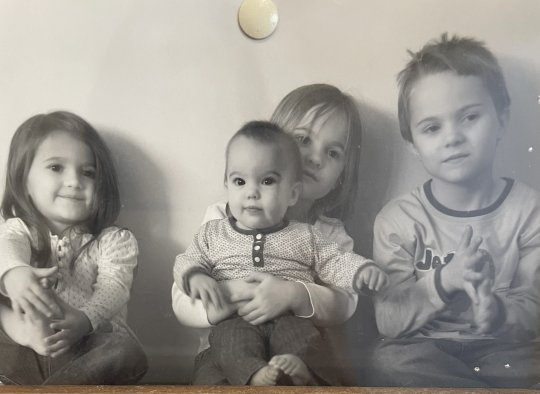
(L-R) mae, edie, hattie, and oscar, from nicole's twitter — each sibling is ~2 years apart (source)
while most drivers on the current grid were introduced to motorsport through go-karting, usually at or before the age of 7, oscar's path to single-seaters differed slightly. he first developed an interest in racing via remote-controlled cars at the age of 6, when his father brought him a monster truck as a souvenir back from a business trip in america. oscar began racing them that same year, eventually moving to safer electric track vehicles and even winning the second class of the national titles in 2010, at the age of 9. he was so small then that he often needed to stand on a milk crate to see the cars on track, and the next-youngest competitor at the time was twice his age. (source)
youtube
oscar on the podium at age 8 (nov 16, 2009)

oscar with his father chris, who often competed alongside him in a separate class (dec 21, 2010)
by 2011, oscar and his father were seriously considering his potential of pursuing rc racing as a viable career path, but things changed when he was introduced to karting via a friend's daughter in the rc community and his aspirations slowly shifted toward racing from inside a car. oscar was an unsurprisingly sporty and competitive child growing up; he'd played some cricket and aussie rules football and knew that all he wanted to do was race professionally, full-stop, at the time thinking along the lines of australian racing categories like v8 supercars. he was still competing in remote car racing as late as 2013, but he began karting seriously within australia in 2014, placing respectably in the junior categories of several regional karting series against relatively senior and more-experienced racers, and even going to france for a one-off event where he finished on the podium of the iame international junior x30 final. this outing affirmed his potential to his father and motivated the two of them to split time between australia and europe in 2015 as they juggled his karting future; plans for two more european events that year fell through, including the cik-fia world championship at the kfj level (which logan sargeant would go on to win), but at this point they were officially looking to take his career to the next level and commit fully to european karting in 2016.
this is when ricky flynn (and the hypothetical idea of lando norris!!!) comes in. before we get into rfm and karting professionally in europe, it's important to note that the defining aspect of landoscar's junior careers is that their pathways never once intersected. in fact, they don't even seem to have met properly before oscar entered the f1 grid as alpine reserve, although they'd spoken over social media and oscar was familiar with several people around lando's life—for example, maxf, logan, guanyu, and even lando's older brother oliver, who had also raced for rfm.
in short, you could say that landoscar's biggest hindrance was their parallel excellence. oscar was good enough to catch up and even surpass everyone else at lando's level, but lando remained untouchable throughout the years. oscar is only 1.5 years younger than him, but their f1 careers are offset by 4 years (2019 vs. 2023 debut) because of exactly two things: oscar's 2022 gap year in alpine and his two attempts at formula renault eurocup. on the other hand, lando sped through all of his junior categories in blistering fashion, falling short of the championship only once: the year he placed 2nd in f2 behind george russell. this is significant because many talk about the clinical nature of oscar's rapid single-seater ascension and three b2b2b victories (still very impressive, especially given his limited karting career!), but all of that speaks equally to the illustrious nature of lando's junior success and the sheer magnitude of faith placed in him as mclaren's "golden boy" coming up the ranks. to put things into further perspective, lando was teammates with maxf and jehan daruvala at rfm until 2014, jehan competing in the same class and max one below, yet by the time oscar was racing max and jehan—in f3 in 2020 and f2 in 2021, respectively—lando was already into his 2nd and 3rd years of f1. here's a chart that hopefully makes a bit more sense:
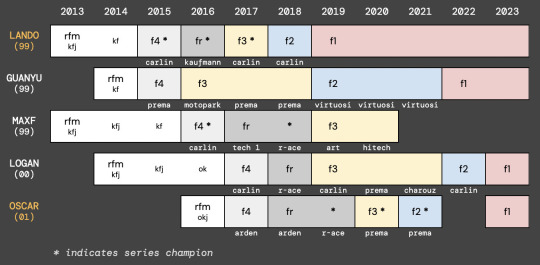
majorly simplified timeline showing lando, guanyu, maxf, logan, and oscar's junior careers + the karting classes they primarily competed in each calendar year. maxf did not complete his 2nd f3 season and many of them contested multiple/different formula renault series, but this is just a rough overview of their feeder series experience.
2. moving to europe, rfm, regional formulae
(2016-2019)
back in australia, oscar was a member of the oakleigh go-kart racing club and being actively mentored by james sera, a multi-time australian karting champion and fa kart dealer who worked with young karting talents alongside his cousin david. in late-2015, he presumably helped oscar and his father reach out to ricky flynn, who ran ricky flynn motorsport (rfm) and whose team was at the time enjoying exorbitant success in the karting scene; lando had won the world championship at the kf level the year prior, and logan would soon clinch the kfj title in 2015, results which further drew oscar's interest toward the team. ricky flynn agreed to take oscar on and have him and his dad move out to europe, and by november 2015 oscar announced on social media that he would be joining rfm the next year. in january of 2016, he and his father moved to hertford, uk, so that oscar could begin a 100-day karting program and travel extensively around europe to attend races. this is where he met logan sargeant, who was in his final year on the team but competing a class above, now at the ok (previously kf) level. oscar himself was only competing in the okj class.
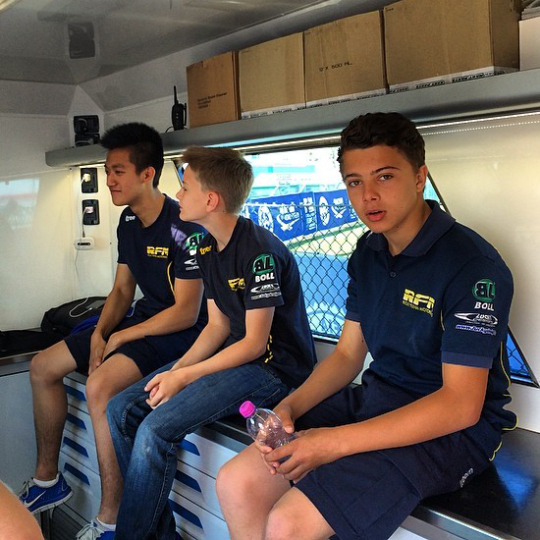

not oscar-related, but as you can see guanyu, logan, and maxf were already acquainted before oscar and logan met, since the three of them and lando had been in rfm together as of 2014 — (may 11, 2014) & (feb 6, 2015)
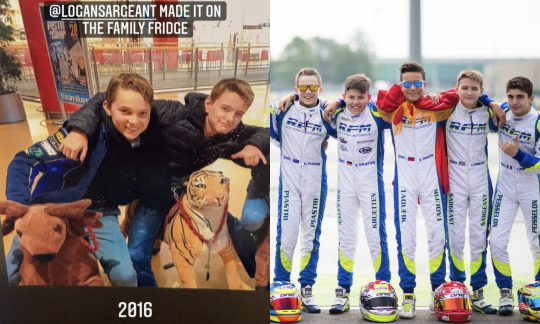
oscar and logan in 2016
in an interview published on june 7, 2023, oscar reflected on leaving australia and committing to his racing dream, saying:
"i think if there was a turning point, it was probably when i started finishing towards the front in australia, and i started winning a couple of races here and there and finishing in the top three of championships and stuff, and then went to europe and fully committed to going down that route. [...] there's obviously a very big commitment at that point when you move halfway across the world without family and stuff. so i knew at that point that i really wanted to become a professional because, firstly, that's what i want to do anyway, but, secondly, now i'm sacrificing seeing my family, and stuff like that to be able to do this — which was a sacrifice i was more than willing to make."
like the majority of oscar's karting career, his time with ricky flynn can primarily be summarized as decent. none of his performances were particularly stellar, and in november 2016 he placed 6th in the fia world championship final behind the likes of victor martins and théo pourchaire (he mainly competed against guys like them, dennis hauger, caio collet, etc… once again logan was a class above and lando/maxf had already graduated to single-seaters), but he showed promising racing foundations and a great capacity for improvement, especially given that he'd moved to europe the same year and was still adjusting to life and racing on the opposite hemisphere. about 6 months into his new karting venture, oscar had settled in reasonably well and his father decided he would return to australia to continue on with his life, so they made the joint decision that oscar was to begin boarding at haileybury's uk campus and continue racing in europe entirely on his own. uk and australian school years are misaligned, so my personal understanding is he moved to europe after finishing year 9 in australia, attempted online school/took a few months off (he says he did online coursework here, but mentioned here that he was out of school, so it sounds like it must have been a very half-hearted effort…), came back to australia over the uk summer to do some more karting, then began boarding in september 2016 as a year 10 student. he spent ~4 years there and eventually received his a-levels in 2020, except his final year was disrupted by covid and he never sat his exams. (blog post mentioning his a-levels + btg transcript excerpt about his exams; his website says he attended haileybury from 2016-19, but i think this mainly encapsulates his boarding period, as he was still doing remote work in april 2020.)
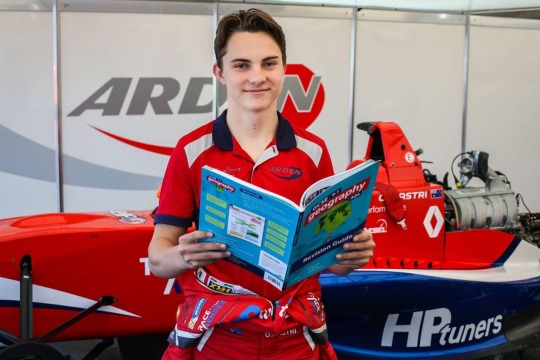
oscar in f4 with his gcse revision guide, 📸 sebastiaan rozendaal (may 20, 2018)
2016 is also when oscar began his well-documented super-liking of several of lando's social media profiles. i think understanding oscar's time in rfm and his extremely british single-seater origins helps better paint his history with lando and maxf; my personal understanding of pre-mclaren landoscar is that while oscar never formally met lando or maxf during his karting days, he knew of them quite well through rfm and thus followed them on instagram/twitter after moving to the uk. of course, oscar has a fairly active social media presence in general, so young oscar quietly liked instagram posts and tweets from many different people, but i do feel compelled to note that in the early days he liked lando, maxf, and logan's posts with seriously impressive frequency compared to anyone else on the grid (or anyone in general, really); after creating his twitter account in may 2016, some of the very first tweets oscar liked were from maxf, and he also liked a multitude of mundane lando tweets from 2016 until… today, while on the other hand he didn't start liking george's tweets—another similarly-aged young british talent—until late 2017. (he does have some fun george-admiring moments though, but that can wait for another time!) outside of rfm, other people oscar was familiar with during his early racing years were british f4 teammate ayrton simmons, to-be series champion jamie caroline, and old australian karting friend christian pancione, who appears to still be one of his best mates (if not his best) as of today. fun fact is that christian raced for the carrera cup as a support event to the australian gp in 2023; here's oscar allegedly checking the quali live timing at lunch during his own media day.
so, to conclude, oscar's early lando focus basically traces back to the motorsport path he took at the behest and guidance of his early rfm connections in the uk. the thing is that despite growing up in australia and vaguely admiring several aussie drivers in f1 as a child (read: mark webber and eventually daniel ricciardo), oscar has never had a specific driver he consistently mentions when pressed for his racing "idol," likely since his personality inherently resists idolatry and he instead views successful people more as actionable benchmarks or reference points for self-improvement rather than as unattainable paragons of accomplishment. as a kid forced to grow up almost entirely on his own, the majority of his racing aspirations were molded independently in the uk—he completed his karting career in the uk, boarded at haileybury for 4 years (fun fact: other drivers to attend include jehan, callum ilott, and clément novalak; callum was a few years above oscar and finished school in 2017, but the two would later become quite talkative over social media anyway), raced in british f4, became a brdc member, contested eurocup under a british license and therefore had the british flag raised and british national anthem played during his wins, stayed in the uk even at alpine since the factory is based in enstone, etc. oscar basically moved to the uk from australia without having really met anyone significant in the racing scene (other than jack doohan, or more importantly jack's father mick, but jack is younger and did an extra year of karting) and pretty much didn't have anyone specific to "look up to" at the time. oscar's first acknowledgement of lando's online existence was in december 2015, when he liked one of lando's instagram posts prior to moving to england, so it can be assumed that lando basically functioned as his most accessible reference point in the junior ladder as a 14 year old dipping his toes into the european racing scene for the first time. that is my highly subjective analysis of the situation!
select quotes re: oscar's inconsistent responses to his motorsport "hero" (or his favorite driver / a driver he looks up to in general):
(f1fs; mar 9, 2022) "i started watching f1 in… 2009 was the first season i properly watched. so when brawn came in, obviously mark was the only aussie on the grid at that point, so i was kind of naturally going for him. then joined by daniel, so obviously going to support the aussies, but i think watching lewis has been nothing short of spectacular, and a very good role model. [...] i think when i was first watching, i supported mark, but, you know, and i hope he takes no offense to this—vettel was winning everything at that point. so i was supporting mark, but vettel was doing most of the winning. i think now that i understand more about racing though, i would say [the driver i look up to the most is] lewis, mainly. the way he goes about things on and off the track is quite exceptional."
(mcl youtube; mar 29, 2023) sporting idols mentioned: ayrton senna, alain prost, michael jordan (see also ultimate athletes list)
(p1; aug 10, 2023) "i would say i never had like one specific idol. when i was growing up watching mark webber was at red bull, and obviously being australian, red bull being very quick at the time, i kind of naturally followed him. i mean—even like some of the guys in the junior ranks above me. like lando was always kind of two, three years above me, winning… most things on his way up. so i guess kind of him in some ways?"
(eff won; dec 4, 2023) "i don’t really have like one specific [idol]. i think what lewis has been able to do in terms of getting to seven world championships was incredibly impressive. i think what max is doing now is also very impressive…"
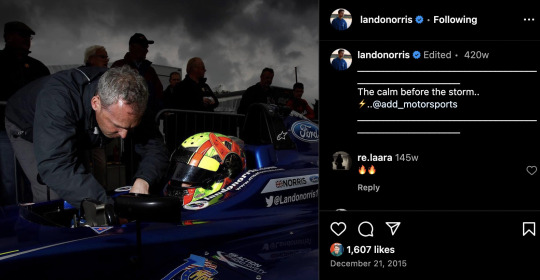
the first lando post oscar liked on instagram (dec 21, 2015)

the first maxf posts oscar liked; instagram (feb 26, 2016) & twitter (may 9, 2016)
anyway, back to british f4! despite his initially unconventional foray into motorsport, oscar's journey progressed in a much more orderly fashion once he stepped up to single-seaters. his actual debut was in f4 uae, which he ran 3 rounds of between 2016 and 2017 (another fun fact: this is where he briefly acquainted himself with mclaren indycar driver david malukas, who would later recall him being very intelligent and whom zak brown allegedly spoke to oscar about before appointing to their indy team). after cutting his teeth on actual car-racing for the first time, oscar decided against moving up to the ok class as he felt confident in his ability to be competitive in single-seaters. his first full season was therefore the 2017 british f4 championship, during which oscar signed with arden while logan went to reigning champions carlin (lando had won with them in 2015, then maxf in 2016). oscar made his way to the top step 6 times in the season and placed just barely above logan for 2nd in the championship, finishing behind the considerably more experienced jamie caroline. arden was also founded and is currently owned by red bull team principal christian horner, so it was during oscar's time there that christian took note of and interest in his talent; oscar reportedly did a few runs in the red bull simulator but was passed over for joining the academy, which christian later voiced regret on. (source)

maxf, logan (center), and oscar (to max's right) on a day maxf was visiting the 2017 british f4 grid (april 11, 2017)
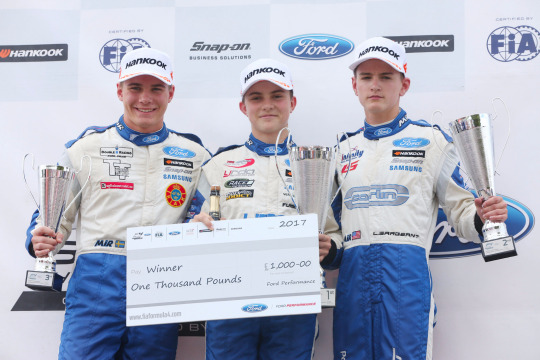
linus lundqvist, oscar, and logan on the podium at snetterton (jul 30, 2017)

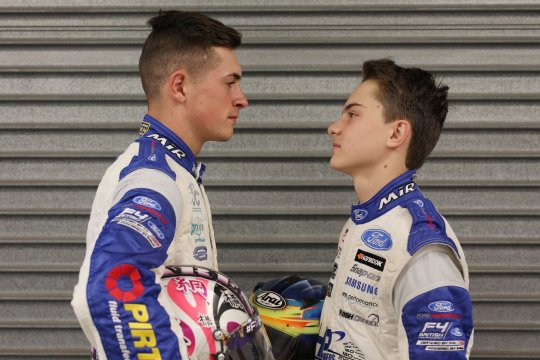
jamie and oscar, who were… er, mathematically in the main championship fight. for some reason they made them take these photos (sep 30, 2017)
after a successful f4 outing with arden, oscar returned to the team for his first season of formula renault eurocup in 2018, a renault series that ran in its specific configuration until 2020 before merging with the parallel regional series frec to become what is today known as freca. this season proved to be less competitive for oscar, as arden was relatively inexperienced in this series and oscar's three teammates were afflicted with what can colloquially be referred to as a "skill issue," making it difficult to collectively develop the car throughout the season. (blog interview) the series was thus returning driver maxf's to lose, who at the time was racing for reigning champs r-ace with teammates that included oscar's fellow rookies logan and victor martins.
despite the unideal environment, oscar managed to prove his worth by placing a respectable 8th in the series, scoring 110 points as a rookie driver and capping the season off with 3 podiums and a top-finish of 2nd place—a jarring contrast to his teammates' joint total of 12 points. this result attracted the attention of r-ace and granted him a seat with them for the 2019 season, at which point maxf and logan both graduated to f3. thankfully that wasn't too much of a concern for oscar since he'd always intended to do two seasons of eurocup, and now he finally had a chance to win the first serious championship of his racing career with an established racing outfit.

oscar, max, and yifei ye on the hockenheim r2 podium (sep 23, 2018)
[full gifset]
oscar's second season of eurocup is when he truly started proving himself as a driver, or at least to the people whose names, money, and opinions mattered around the paddock. his main competition in 2019 was again victor, who was now racing for mp and had been made a member of the renault sport academy back in 2018 after a strong performance in french f4. despite a close title fight, oscar managed to hold him off for the championship in the final race of the season, kicking off what would soon become an impressive string of consecutive single-seater series titles. even sweeter was the fact that all eurocup champions were awarded a renault sport academy spot that could be left or taken as they pleased, and of course—while the finances weren't nearly as impressive as alpine would later proclaim in their baseless smear campaign—oscar's connections in the racing world were limited as an australian driver almost exclusively managed by his father, so he gladly accepted the offer for the many venues of support renault presented to him.
see also: bby oscar briefly mentioning lando after winning eurocup in 2019 (@ 1:10)

oscar being lifted by his team (r-ace) after placing 4th in the abu dhabi finale and winning the title by 7.5 points
3. renault sport academy, lockdown, f3
(2020)
many things happened in 2020. one: oscar became an official member of the renault sport academy, joining the likes of max (who'd been picked up on merit after winning british f4 in 2017), guanyu, christian lundgaard, caio collett, and fellow new recruit hadrien david (victor had been strategically demoted after oscar's win because renault is a notoriously unserious organization, but again this is not the post). two: by the time oscar was ready for f3, moving up the ladder proved to be exorbitantly expensive, and he realized he needed better funds and managerial support to sort his career out. he'd been offered a spot in prema's f3 team by team-owner rené rosin at the end of his eurocup season, who'd named him for the post-season test before the championship was over and stressed that the spot was his no matter where he finished. (source) prema is unquestionably one of the top—if not frequently the top—teams one can drive for in most junior series (though there is also somewhat of a self-selection bias; if you ask oscar he is not a significant beneficiary of prematax!), having absolutely demolished the f3 competition that same year and achieved a clean sweep of the drivers' standings with rob shwartzman, marcus armstrong, and jehan at 1-2-3 consecutively. oscar completed post-season testing with them in spain alongside to-be teammates logan and fred vesti in october (source), before confirming on jan 26, 2020 that he would be joining them for the f3 season as a renault junior.
so, where does mark webber come in here? apparently mark's trainer from red bull and wec had also been oscar's trainer since 2016 (i'm pretty sure this is australian physiologist simon sostaric), and it was through their joint connection that oscar was introduced to mark. according to mclaren's 2023 season preview, "the pair hit it off, and webber took his countryman under his wing," signing oscar to jam sports management, aka the management agency he runs with his wife ann. mark's support would become a major factor in helping oscar progress through the feeder ranks and establish himself in f1, mainly because he had actual connections and could help oscar network with sponsors and negotiate his way during future signings. of course, more on this later.
as an aside, here are a few things mark has said about oscar:
"he’s got that white line fever when he puts his helmet on and turns into a different character, which is sensational." (mar 1, 2020)
"one of oscar’s biggest strengths by a mile, compared to everyone he is competing against — and this will be a huge string to his bow when he makes it to f1 — is his composure. he has immense levels of composure. [...] if you are weak mentally you won’t make it. he was on his own from an early age. he did brilliantly with his studies. but the racing disease would not go away, he wants it very much." (sydney morning herald; dec 11, 2021)
"he’s a prost, mate. he’s such a thinker and so calm. at first i thought i needed to inject a bit of urgency in him, but actually no, he’s got his own frequency. that’s just where he is." (the race; oct 7, 2023)

estimates provided by chris piastri on the cost of oscar's junior career, stressing the million-dollar commitments of running a single season of f3 or f2 (source)
anyway, back to the chaotic events of 2020. i think something that's good to keep in mind when discussing oscar's time in the renault sport academy is that he was actually a relatively new recruit, as in he only participated in a single training camp with the other juniors in 2020 and most of them (max, christian, guanyu, the temporary ghost of victor) already knew each other before. oscar essentially met with renault's factory team in early 2020, filmed promotional material with other juniors in january before attending the season opener together in february and then heading to winter training camp later that month, after which he and max left early for f3 pre-season testing in bahrain on march 1—a blessing in disguise, seeing as caio, hadrien, and christian remained behind and would soon be stuck quaranting in a hotel in tenerife—then briefly spent a week at school before returning home for what was meant to be a quick pit stop at the australian gp, which at the time had yet to be canceled.
then, of course, lockdown happened.

simplified breakdown of renault junior stints, notably showcasing the academy's struggles to meaningfully promote any of its juniors
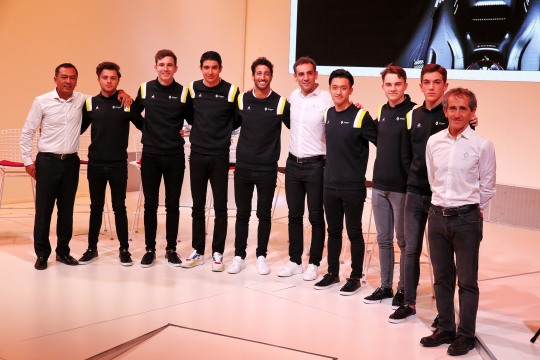
oscar at the 2020 renault season opener alongside then-academy director mia sharizman, then-tp cyril abiteboul, alain prost, f1 drivers esteban ocon and daniel ricciardo, and the other academy juniors: fewtrell, lundgaard, zhou, david (feb 12, 2020)

oscar and maxf behind the scenes of the same event (feb 12, 2020)
stuck in australia for three months, oscar would end up participating in two fia virtual races, one for f2 and another for f1 (jun 7, 2020). a fun landoscar tidbit is that he finished 5th in the virtual gp right behind lando, so they technically had raced each other before 2023, depending on... well, whether you count a 2020 sim race wherein george russell and alex albon lead the pack as a real race. nevertheless, this was a time when drivers were becoming much more active online, seeing as streaming was the best way to keep their images relevant and connect with fans, and despite oscar expressing little interest in streaming on twitch he would still experience a considerable uptick in his online activity and twitter reach that year.
racing resumed on july 4 at the red bull ring in austria; oscar had been granted an exemption to travel to the uk and complete a 2-week quarantine back on may 27, a reassuring indicator to the motorsport world that the f3 season would run after all. now that he no longer had to attend school, having received 2 b's and 1 c for his maths, physics, and computer science a-levels, oscar relocated from hertford to oxford in june to be near the renault facilities, which he visited nearly every day to train at, and began living independently (as in in a flat) for the first time since 2016, rooming with fellow renault junior caio collet.
as i said before, this season is when oscar's online presence and "memeability" began to really conceptualize, enabled primarily by the fact that he was a) finally living outside of a school dormitory, and b) now, of course, signed at prema, a team notorious for its social media visibility, literal family atmosphere, and frequent youtube pandering. according to this f3 article, his twitter followers jumped from 795 at the start of the season to 11.6k by the time he won the championship, an audience built significantly off the self-deprecating string of jokes he used to tweet regarding drs and general reliability issues faced throughout the season.
what i guess i want to touch on here is how oscar's online presence has always been concentrated around the bare fundamentals of his personality: dry humor, candid words, sparing emojis, a few humorous photos detailing the mundane reality of his everyday routines, and at most the occasional inopportune meme or reaction gif (#thepiastri 🤷♂️, f2 in baku, jetpack guy, so on). he's bantered frequently with callum on twitter and near-obsessively liked memes, videos, and other updates lando shares with his audience, but he also has seemingly little interest in building up his own "brand" the way lando so smartly has with ln4 and quadrant, and quite frankly seems viscerally incapable of wanting to engage one-to-one with fans or otherwise leveraging the popularity of his material image. basically what i like to say is that oscar enjoys being adjacent to "lad humor" and will happily enable it, but he really has no interest in being the one to initiate it himself!
"there's some things you want to share, some things you don’t. in today's age and sort of having the profile that us drivers do, we kind of just have everything shared,” piastri said. “but (social media) can be used for good, certainly within the profiles that we have. but in some ways, it can be negative, and there's always going to be people out there that don't like you for being you.”
piastri tries to write as many of his posts as possible, and he checks those written by his team to be sure they sound authentically him. (the athletic; jun 29, 2023)
along these lines, oscar does enjoy the spotlight, only he seems to prefer it concentrated in a specific lens toward a specific productive end. he's endlessly capable of seeing the objective upside of a situation, joking after he was made a meme in baku following his f2 sr1 collision that he was all for it if it got him popularity. after his eurocup championship he also said: "i think everyone loves a bit of spotlight on them. i think that's just human nature, so a bit of attention's always nice." which is interesting to me!
but back to racing. this season would unexpectedly become two things: maxf's last competitive season in motorsport—especially disappointing considering that he'd gone into the championship expecting to put on a second-season title charge, instead failing to gel with the hitech team to the point that each increasingly poor weekend made him spiral mentally—as well as oscar and logan's last season racing against each other before f1, since logan would later encounter financial difficulties that left him stranded in f3 as oscar catapulted himself to f2 victory. 2020 was obviously a weird season in general because of covid and the gap from pre-season testing, so it also meant that oscar had gone into the season fairly rusty; he managed to win the first race of the season, but on top of his drs rollercoaster he did struggle with middling results in qualifying and was met step-by-step throughout the championship by logan.
maxf's last race in f3 was the barcelona sprint race on august 16, with three rounds left to the end of the season. he dnfed in an unfortunate first-lap incident mere moments after oscar charged his way up from 5th on the grid to the front of the pack, where he would eventually breeze his way to victory and pull himself near-level with logan for the championship lead. i recognize that this is an oscar post and not a maxf post, but i think their time in f3 during an extremely isolated and covid-affected period speaks to both an interesting dynamic between them (the little kid who always lagged a series behind you suddenly beating you on merit) and their respective temperaments toward racing. while at renault, max reportedly lived with jack aitken during the week but would return to his family home on weekends, so it makes sense that he struggled to adapt when covid hit and drivers were collectively forced into very regimented sporting bubbles. mark webber, who worked for channel 4 as a commentator and had access to the f1 paddock, basically couldn't see oscar in person and instead spoke to him over the phone every day on race weekends. maxf said of his decision to quit:
"normally [...] i’m able to stay calm under pressure and i don’t let many things get to me but when you have a bad qualifying result and you see guys up there that you know you’re capable of beating, it definitely takes a dig at you inside and it’s been a lot to process throughout the year." (source)
while then-academy director mia sharizman, who worked closely with the renault juniors, spoke of oscar's inherent propensity for independence and how he adapted well to the pressures of living on his own:
"if you look at oscar piastri, he has been living on his own, [away] from his family who are in melbourne for the past five to six years. because he has been living on his own in boarding school, he learns how to live on his own, and he thrives in that. we have to force him... 'have you spoken to your father?!' it's just things like that, but he thrives in that. that's why he thrived in those weekends racing. he loves being on his own without anybody.
on the other hand, we had max fewtrell, for example, who can't – he couldn't survive the 11 weekends racing, because he always needed his family to be around him. so those are the things that suddenly you see and, i think that that we see now, after a few years a driver who is quick, a driver who has the talent, and then the driver who is stable." (source)
2020 is also when lando and oscar spoke to each other on twitter for the first time. yay! after lando went semi-viral for having a meltdown over a hornet on three separate social media platforms, oscar first joked with him about it on august 24 (this was incidentally also the day maxf announced his functional retirement, which oscar liked as well 😭), before referencing the incident again a few weeks later in september.

(aug 24, 2020) / (sep 10, 2020)
outside of drs tweets and trying desperately to banter with lando norris, oscar's popular tweets at the time included several food-related mishaps and home appliance tragedies. while this isn't actually a lando moment, he was also slandered by the LN4 twitter account a month later on october 17 for reasons that remain a mystery, resulting in this set of interactions:

(oct 17, 2020) / (oct 19, 2020)

bonus: maxf's tweets @ oscar (when you aren't close enough to just text him.......)
but back to f3. similarly to his second season of eurocup, oscar would go on to clinch the title in only the final race of the year, this time even more stressfully—he never got pole that season and won arguably off of consistency, benefiting from errors and unfortunate collisions involving his primary competitors. after a hectic qualifying and string of contentious grid penalties set for the before-last round in monza, he began the feature race 15th on the grid but put on an impressive performance to finish on the podium, buffing his points lead after logan was tapped by clément and put out of the points. he, logan, and fred all dnfed in race 2 (read: the novalak pendulum swung away from oscar's favor to maintain stringent cosmic equilibrium, while logan and fred threw away a points opportunity with a teammate4teammate love tap), and oscar went into mugello with only an 8-point lead over logan and a 24-point lead over pourchaire. this weekend proved equally hectic, as is frequently the case with f3 racing standards, but in short oscar and logan entered the final sprint race level on points, with théo approaching terrifyingly near in their rearview mirrors. logan was unceremoniously taken out of contention on the first lap after contact with zendeli, and oscar managed to squeak his way to 164 points in the championship by placing 7th in the race; théo finished 3rd, with 161 points, two positions away from claiming both the race and the championship title.

a succinct summary of an eventful season! (posted jun 30, 2021)
despite winning the f3 championship in far-from-dominant fashion, oscar's career was now steadily on an upward trend. on october 30 he was rewarded with a private test in the r.s.18 at bahrain alongside christian and guanyu, and a month later confirmed that he would be racing for prema again in f2 (december 1, 2020). as a rookie f3 champion there was a moderate amount of interest in him, but no one really expected him to carry home the f2 title on his first try and so one of the main favorites going into the next season was his second-year teammate and 2019 f3 champion rob shwartzman.
4. f2, alpine reserve duties, #piastrigate
(2021-2022)
at the start of 2021, fernando officially took daniel's place at renault and the team rebranded itself as alpine, parting ways with team principal cyril abiteboul and functionally replacing him with new ceo laurent rossi—part of a no-tp management structure, frankly a self-evident infrastructural faux-pas from a million miles away. the renault sport academy was then also renamed to alpine academy; again i know that this is an oscar post so i won't get too into the details of Alpine Being Alpine, but understanding how the academy functioned does help better contextualize the inevitable unfurling of piastrigate.
the main issue, really, would always be laurent rossi, or at least the values laurent rossi had been hired to represent and which he willingly peddled during his controversial tenure at alpine. after rossi's appointment it was reported that "the renamed alpine academy was now being tugged in two directions between director mia sharizman's ideal as a creator of future f1 drivers and alpine's chief executive officer laurent rossi's commercially-led preferences." (source) mia directed the academy from january 2016 until may 2022, and had been the one to restructure its recruitment process by demanding better funding and robust testing programs to cyril:
"when we first restarted the team in 2016, it was, we didn't even have a two-year-old car program at that time. we had to use a 2012 program using the [lotus] e20. [...] then in 2018, i went through it, and i said to cyril abiteboul, "look, let's try and do this." we needed financial resources. i needed a head start with financial resources to kick start the program whereby you entice drivers, and you offer [a place] to the academy drivers. it was more to see how they are... it was more of an evaluation process... that was what the first idea was. then we developed the program to develop the drivers to suit their formual 2 program." (source)
(note: mia also believed that 2020 was a disappointing year for all of his juniors save for oscar's performance in f3, which is a whole other thing. but rossi's greatest shortcoming was that he had singular, insulated vision, and he resisted any external input to the detriment of reactionary business decisions, a fact that alienated alain prost and soon led to his exit from the outfit in 2022. not a good look!!! prost would later call rossi "the best example of the dunning-kruger effect, that of an incapable leader who thinks himself able to overcome his incompetence with his arrogance and lack of humanity toward his troops." 🤌)
so basically, the cracks of mind-boggling incompetence within the team's leadership structure were long evident. on a brighter note, oscar's 2021 f2 season would quickly become his strongest single-seater contest ever (f1 youtube has a good summarizing video of his season, if interested); because of covid, f2 was experimenting with a three-race format this year in which quali set the reverse grid for sr1 and sr1 results then set the reverse grid for sr2, which essentially meant high qualifiers were rewarded for simply maintaining composure in the first sprint and running cleanly in the top 10 in order to secure a favorable grid spot in sr2. oscar adapted well to this format, building off his reputation of smooth, consistent driving on top of slowly improving his qualifying results over the course of the season, finally breaking through with his first feature-race win in monza.

oscar with mia sharizman
this is also around the time when lando mentioned oscar in official f1 media for the first time, reading off a question about him to daniel in an interview posted in october:
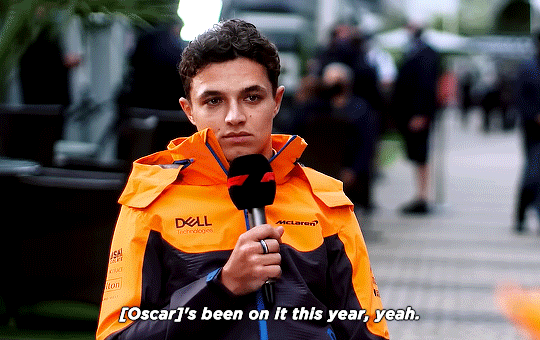
"this one's not even about formula one. it's about oscar piastri. oscar pias-tree! [...] he's been on it this year."
— (full video) (oct 1, 2021)
of his own f2 campaign, oscar said:
"i thought that i could challenge for race wins, but i probably wasn't expecting to be so consistently at the front. consistency is something that i’ve had as a trait throughout my career, and i was expecting to be consistent in my results this year — but maybe a bit lower down!" (source)
not only did he end up being consistently at the front, he became virtually unstoppable in the second half of the season. on december 11, oscar clinched the title in abu dhabi with two races to spare, ending the season with 5 consecutive poles and 4 consecutive feature wins, 60.5 points above his previously-favored teammate in the standings. #notbadforashitqualifier!
by now oscar was a hot commodity in the paddock; the only problem was that alpine didn't really care, mainly because rossi had enthusiastically re-signed ocon to a three-year deal in 2021 and held zero intention of actually promoting any of its juniors to one of the race seats, plus the one open spot at alfa romeo had instead gone to guanyu and his considerable financial package (though oscar has always been vocally defensive of guanyu's appointment to his detractors). instead of moving to another series, such as indycar or super formula, oscar recognized that he'd proven everything he needed to prove within the feeder system and opted to remain on the grid as alpine's reserve driver, mainly so that he could embed himself in an f1 team environment and—most crucially—avoid being left "out of sight, out of mind," because once you go to america you usually don't come back.
i'll keep the rest of this post brief since i feel like everyone already knows What Went Down, but a quick highlight for fellow landoscar enjoyers was the 2022 australian gp on april 10, during which oscar accompanied rosanna tennant for the post-race show and awkwardly participated in a chaotic lando & alex interview. as far as i know, this was landoscar's first time interacting on-camera!

o: "i haven't raced either of them, no."
l: "not yet!"
o: "not yet. hopefully soon."
— (full video) (apr 10, 2022)
then silly season started, and everything was thrown into disarray when sebastian vettel announced his imminent retirement and fernando subsequently took his place at aston martin; alpine scrambled to recover from this blindsided move and prematurely promoted oscar to an f1 seat, to which oscar eventually posted The Tweet—claiming he'd never signed a contract with alpine and would not be racing for them in 2023, thus kicking off #piastrigate. or the piasco, or whatever you prefer to call it.
here's a good article that properly summarizes the crb ruling, but tl;dr: mclaren and alpine had come to an agreement back in march to loan oscar to mclaren's stable of reserve drivers after daniel contracted covid; mark webber, who was close to andreas seidl from their time at porsche in wec, quietly negotiated a contract with mclaren for 2023 that oscar would then sign on july 4, which was reportedly initially a reserve deal with an upgrade clause to a full-time drive given a dr buyout; alpine's legal team turned out to be essentially one overworked legal director who mishandled the situation thanks to a lack of organizational support, while a concrete williams deal never actually existed no matter what people continuously allege, and any proprietary right to oscar's services that alpine purported to have for the 2023 season would soon be voided by crb rule on september 2. in other words, they dun goofed.
because tumblr dies when i try to include it in this post, here's a link to a condensed chronological timeline version of this post.
that's it for now. i'm sure you know how the rest goes!!!
#oscar piastri#*m#quite possibly the dumbest thing i've ever written and most likely of no use to anyone at all. but i had fun so no flames pls 🥲☝️#there's so much more i could have said this is quite frankly the condensed version... scrapped a whole separate section on just his psyche#i need 2 be normal.........
378 notes
·
View notes
Text
I thought y'all should read this
I have a free trial to News+ so I copy-pasted it for you here. I don't think Jonathan Haidt would object to more people having this info.
Tumblr wouldn't let me post it until i removed all the links to Haidt's sources. You'll have to take my word that everything is sourced.
End the Phone-Based Childhood Now
The environment in which kids grow up today is hostile to human development.
By Jonathan Haidt
Something went suddenly and horribly wrong for adolescents in the early 2010s. By now you’ve likely seen the statistics: Rates of depression and anxiety in the United States—fairly stable in the 2000s—rose by more than 50 percent in many studies from 2010 to 2019. The suicide rate rose 48 percent for adolescents ages 10 to 19. For girls ages 10 to 14, it rose 131 percent.
The problem was not limited to the U.S.: Similar patterns emerged around the same time in Canada, the U.K., Australia, New Zealand, the Nordic countries, and beyond. By a variety of measures and in a variety of countries, the members of Generation Z (born in and after 1996) are suffering from anxiety, depression, self-harm, and related disorders at levels higher than any other generation for which we have data.
The decline in mental health is just one of many signs that something went awry. Loneliness and friendlessness among American teens began to surge around 2012. Academic achievement went down, too. According to “The Nation’s Report Card,” scores in reading and math began to decline for U.S. students after 2012, reversing decades of slow but generally steady increase. PISA, the major international measure of educational trends, shows that declines in math, reading, and science happened globally, also beginning in the early 2010s.
As the oldest members of Gen Z reach their late 20s, their troubles are carrying over into adulthood. Young adults are dating less, having less sex, and showing less interest in ever having children than prior generations. They are more likelyto live with their parents. They were less likely to get jobs as teens, and managers say they are harder to work with. Many of these trends began with earlier generations, but most of them accelerated with Gen Z.
Surveys show that members of Gen Z are shyer and more risk averse than previous generations, too, and risk aversion may make them less ambitious. In an interview last May, OpenAI co-founder Sam Altman and Stripe co-founder Patrick Collison noted that, for the first time since the 1970s, none of Silicon Valley’s preeminent entrepreneurs are under 30. “Something has really gone wrong,” Altman said. In a famously young industry, he was baffled by the sudden absence of great founders in their 20s.
Generations are not monolithic, of course. Many young people are flourishing. Taken as a whole, however, Gen Z is in poor mental health and is lagging behind previous generations on many important metrics. And if a generation is doing poorly––if it is more anxious and depressed and is starting families, careers, and important companies at a substantially lower rate than previous generations––then the sociological and economic consequences will be profound for the entire society.

What happened in the early 2010s that altered adolescent development and worsened mental health? Theories abound, but the fact that similar trends are found in many countries worldwide means that events and trends that are specific to the United States cannot be the main story.
I think the answer can be stated simply, although the underlying psychology is complex: Those were the years when adolescents in rich countries traded in their flip phones for smartphones and moved much more of their social lives online—particularly onto social-media platforms designed for virality and addiction. Once young people began carrying the entire internet in their pockets, available to them day and night, it altered their daily experiences and developmental pathways across the board. Friendship, dating, sexuality, exercise, sleep, academics, politics, family dynamics, identity—all were affected. Life changed rapidly for younger children, too, as they began to get access to their parents’ smartphones and, later, got their own iPads, laptops, and even smartphones during elementary school.
As a social psychologist who has long studied social and moral development, I have been involved in debates about the effects of digital technology for years. Typically, the scientific questions have been framed somewhat narrowly, to make them easier to address with data. For example, do adolescents who consume more social media have higher levels of depression? Does using a smartphone just before bedtime interfere with sleep? The answer to these questions is usually found to be yes, although the size of the relationship is often statistically small, which has led some researchers to conclude that these new technologies are not responsible for the gigantic increases in mental illness that began in the early 2010s.
But before we can evaluate the evidence on any one potential avenue of harm, we need to step back and ask a broader question: What is childhood––including adolescence––and how did it change when smartphones moved to the center of it? If we take a more holistic view of what childhood is and what young children, tweens, and teens need to do to mature into competent adults, the picture becomes much clearer. Smartphone-based life, it turns out, alters or interferes with a great number of developmental processes.
The intrusion of smartphones and social media are not the only changes that have deformed childhood. There’s an important backstory, beginning as long ago as the 1980s, when we started systematically depriving children and adolescents of freedom, unsupervised play, responsibility, and opportunities for risk taking, all of which promote competence, maturity, and mental health. But the change in childhood accelerated in the early 2010s, when an already independence-deprived generation was lured into a new virtual universe that seemed safe to parents but in fact is more dangerous, in many respects, than the physical world.
My claim is that the new phone-based childhood that took shape roughly 12 years ago is making young people sick and blocking their progress to flourishing in adulthood. We need a dramatic cultural correction, and we need it now.
1. The Decline of Play and Independence
Human brains are extraordinarily large compared with those of other primates, and human childhoods are extraordinarily long, too, to give those large brains time to wire up within a particular culture. A child’s brain is already 90 percent of its adult size by about age 6. The next 10 or 15 years are about learning norms and mastering skills—physical, analytical, creative, and social. As children and adolescents seek out experiences and practice a wide variety of behaviors, the synapses and neurons that are used frequently are retained while those that are used less often disappear. Neurons that fire together wire together, as brain researchers say.
Brain development is sometimes said to be “experience-expectant,” because specific parts of the brain show increased plasticity during periods of life when an animal’s brain can “expect” to have certain kinds of experiences. You can see this with baby geese, who will imprint on whatever mother-sized object moves in their vicinity just after they hatch. You can see it with human children, who are able to learn languages quickly and take on the local accent, but only through early puberty; after that, it’s hard to learn a language and sound like a native speaker. There is also some evidence of a sensitive period for cultural learning more generally. Japanese children who spent a few years in California in the 1970s came to feel “American” in their identity and ways of interacting only if they attended American schools for a few years between ages 9 and 15. If they left before age 9, there was no lasting impact. If they didn’t arrive until they were 15, it was too late; they didn’t come to feel American.
Human childhood is an extended cultural apprenticeship with different tasks at different ages all the way through puberty. Once we see it this way, we can identify factors that promote or impede the right kinds of learning at each age. For children of all ages, one of the most powerful drivers of learning is the strong motivation to play. Play is the work of childhood, and all young mammals have the same job: to wire up their brains by playing vigorously and often, practicing the moves and skills they’ll need as adults. Kittens will play-pounce on anything that looks like a mouse tail. Human children will play games such as tag and sharks and minnows, which let them practice both their predator skills and their escaping-from-predator skills. Adolescents will play sports with greater intensity, and will incorporate playfulness into their social interactions—flirting, teasing, and developing inside jokes that bond friends together. Hundreds of studies on young rats, monkeys, and humans show that young mammals want to play, need to play, and end up socially, cognitively, and emotionally impaired when they are deprived of play.
One crucial aspect of play is physical risk taking. Children and adolescents must take risks and fail—often—in environments in which failure is not very costly. This is how they extend their abilities, overcome their fears, learn to estimate risk, and learn to cooperate in order to take on larger challenges later. The ever-present possibility of getting hurt while running around, exploring, play-fighting, or getting into a real conflict with another group adds an element of thrill, and thrilling play appears to be the most effective kind for overcoming childhood anxieties and building social, emotional, and physical competence. The desire for risk and thrill increases in the teen years, when failure might carry more serious consequences. Children of all ages need to choose the risk they are ready for at a given moment. Young people who are deprived of opportunities for risk taking and independent exploration will, on average, develop into more anxious and risk-averse adults.
Human childhood and adolescence evolved outdoors, in a physical world full of dangers and opportunities. Its central activities––play, exploration, and intense socializing––were largely unsupervised by adults, allowing children to make their own choices, resolve their own conflicts, and take care of one another. Shared adventures and shared adversity bound young people together into strong friendship clusters within which they mastered the social dynamics of small groups, which prepared them to master bigger challenges and larger groups later on.
And then we changed childhood.
The changes started slowly in the late 1970s and ’80s, before the arrival of the internet, as many parents in the U.S. grew fearful that their children would be harmed or abducted if left unsupervised. Such crimes have always been extremely rare, but they loomed larger in parents’ minds thanks in part to rising levels of street crime combined with the arrival of cable TV, which enabled round-the-clock coverage of missing-children cases. A general decline in social capital––the degree to which people knew and trusted their neighbors and institutions––exacerbated parental fears. Meanwhile, rising competition for college admissions encouraged more intensive forms of parenting. In the 1990s, American parents began pulling their children indoors or insisting that afternoons be spent in adult-run enrichment activities. Free play, independent exploration, and teen-hangout time declined.
In recent decades, seeing unchaperoned children outdoors has become so novel that when one is spotted in the wild, some adults feel it is their duty to call the police. In 2015, the Pew Research Center found that parents, on average, believed that children should be at least 10 years old to play unsupervised in front of their house, and that kids should be 14 before being allowed to go unsupervised to a public park. Most of these same parents had enjoyed joyous and unsupervised outdoor play by the age of 7 or 8.
2. The Virtual World Arrives in Two Waves
The internet, which now dominates the lives of young people, arrived in two waves of linked technologies. The first one did little harm to Millennials. The second one swallowed Gen Z whole.
The first wave came ashore in the 1990s with the arrival of dial-up internet access, which made personal computers good for something beyond word processing and basic games. By 2003, 55 percent of American households had a computer with (slow) internet access. Rates of adolescent depression, loneliness, and other measures of poor mental health did not rise in this first wave. If anything, they went down a bit. Millennial teens (born 1981 through 1995), who were the first to go through puberty with access to the internet, were psychologically healthier and happier, on average, than their older siblings or parents in Generation X (born 1965 through 1980).
The second wave began to rise in the 2000s, though its full force didn’t hit until the early 2010s. It began rather innocently with the introduction of social-media platforms that helped people connect with their friends. Posting and sharing content became much easier with sites such as Friendster (launched in 2003), Myspace (2003), and Facebook (2004).
Teens embraced social media soon after it came out, but the time they could spend on these sites was limited in those early years because the sites could only be accessed from a computer, often the family computer in the living room. Young people couldn’t access social media (and the rest of the internet) from the school bus, during class time, or while hanging out with friends outdoors. Many teens in the early-to-mid-2000s had cellphones, but these were basic phones (many of them flip phones) that had no internet access. Typing on them was difficult––they had only number keys. Basic phones were tools that helped Millennials meet up with one another in person or talk with each other one-on-one. I have seen no evidence to suggest that basic cellphones harmed the mental health of Millennials.
It was not until the introduction of the iPhone (2007), the App Store (2008), and high-speed internet (which reached 50 percent of American homes in 2007)—and the corresponding pivot to mobile made by many providers of social media, video games, and porn—that it became possible for adolescents to spend nearly every waking moment online. The extraordinary synergy among these innovations was what powered the second technological wave. In 2011, only 23 percent of teens had a smartphone. By 2015, that number had risen to 73 percent, and a quarter of teens said they were online “almost constantly.” Their younger siblings in elementary school didn’t usually have their own smartphones, but after its release in 2010, the iPad quickly became a staple of young children’s daily lives. It was in this brief period, from 2010 to 2015, that childhood in America (and many other countries) was rewired into a form that was more sedentary, solitary, virtual, and incompatible with healthy human development.
3. Techno-optimism and the Birth of the Phone-Based Childhood
The phone-based childhood created by that second wave—including not just smartphones themselves, but all manner of internet-connected devices, such as tablets, laptops, video-game consoles, and smartwatches—arrived near the end of a period of enormous optimism about digital technology. The internet came into our lives in the mid-1990s, soon after the fall of the Soviet Union. By the end of that decade, it was widely thought that the web would be an ally of democracy and a slayer of tyrants. When people are connected to each other, and to all the information in the world, how could any dictator keep them down?
In the 2000s, Silicon Valley and its world-changing inventions were a source of pride and excitement in America. Smart and ambitious young people around the world wanted to move to the West Coast to be part of the digital revolution. Tech-company founders such as Steve Jobs and Sergey Brin were lauded as gods, or at least as modern Prometheans, bringing humans godlike powers. The Arab Spring bloomed in 2011 with the help of decentralized social platforms, including Twitter and Facebook. When pundits and entrepreneurs talked about the power of social media to transform society, it didn’t sound like a dark prophecy.
You have to put yourself back in this heady time to understand why adults acquiesced so readily to the rapid transformation of childhood. Many parents had concerns, even then, about what their children were doing online, especially because of the internet’s ability to put children in contact with strangers. But there was also a lot of excitement about the upsides of this new digital world. If computers and the internet were the vanguards of progress, and if young people––widely referred to as “digital natives”––were going to live their lives entwined with these technologies, then why not give them a head start? I remember how exciting it was to see my 2-year-old son master the touch-and-swipe interface of my first iPhone in 2008. I thought I could see his neurons being woven together faster as a result of the stimulation it brought to his brain, compared to the passivity of watching television or the slowness of building a block tower. I thought I could see his future job prospects improving.
Touchscreen devices were also a godsend for harried parents. Many of us discovered that we could have peace at a restaurant, on a long car trip, or at home while making dinner or replying to emails if we just gave our children what they most wanted: our smartphones and tablets. We saw that everyone else was doing it and figured it must be okay.
It was the same for older children, desperate to join their friends on social-media platforms, where the minimum age to open an account was set by law to 13, even though no research had been done to establish the safety of these products for minors. Because the platforms did nothing (and still do nothing) to verify the stated age of new-account applicants, any 10-year-old could open multiple accounts without parental permission or knowledge, and many did. Facebook and later Instagram became places where many sixth and seventh graders were hanging out and socializing. If parents did find out about these accounts, it was too late. Nobody wanted their child to be isolated and alone, so parents rarely forced their children to shut down their accounts.
We had no idea what we were doing.
4. The High Cost of a Phone-Based Childhood
In Walden, his 1854 reflection on simple living, Henry David Thoreau wrote, “The cost of a thing is the amount of … life which is required to be exchanged for it, immediately or in the long run.” It’s an elegant formulation of what economists would later call the opportunity cost of any choice—all of the things you can no longer do with your money and time once you’ve committed them to something else. So it’s important that we grasp just how much of a young person’s day is now taken up by their devices.
The numbers are hard to believe. The most recent Gallup data show that American teens spend about five hours a day just on social-media platforms (including watching videos on TikTok and YouTube). Add in all the other phone- and screen-based activities, and the number rises to somewhere between seven and nine hours a day, on average. The numbers are even higher in single-parent and low-income families, and among Black, Hispanic, and Native American families.
In Thoreau’s terms, how much of life is exchanged for all this screen time? Arguably, most of it. Everything else in an adolescent’s day must get squeezed down or eliminated entirely to make room for the vast amount of content that is consumed, and for the hundreds of “friends,” “followers,” and other network connections that must be serviced with texts, posts, comments, likes, snaps, and direct messages. I recently surveyed my students at NYU, and most of them reported that the very first thing they do when they open their eyes in the morning is check their texts, direct messages, and social-media feeds. It’s also the last thing they do before they close their eyes at night. And it’s a lot of what they do in between.
The amount of time that adolescents spend sleeping declined in the early 2010s, and many studies tie sleep loss directly to the use of devices around bedtime, particularly when they’re used to scroll through social media. Exercise declined, too, which is unfortunate because exercise, like sleep, improves both mental and physical health. Book reading has been declining for decades, pushed aside by digital alternatives, but the decline, like so much else, sped up in the early 2010s. With passive entertainment always available, adolescent minds likely wander less than they used to; contemplation and imagination might be placed on the list of things winnowed down or crowded out.
But perhaps the most devastating cost of the new phone-based childhood was the collapse of time spent interacting with other people face-to-face. A study of how Americans spend their time found that, before 2010, young people (ages 15 to 24) reported spending far more time with their friends (about two hours a day, on average, not counting time together at school) than did older people (who spent just 30 to 60 minutes with friends). Time with friends began decreasing for young people in the 2000s, but the drop accelerated in the 2010s, while it barely changed for older people. By 2019, young people’s time with friends had dropped to just 67 minutes a day. It turns out that Gen Z had been socially distancing for many years and had mostly completed the project by the time COVID-19 struck.
You might question the importance of this decline. After all, isn’t much of this online time spent interacting with friends through texting, social media, and multiplayer video games? Isn’t that just as good?
Some of it surely is, and virtual interactions offer unique benefits too, especially for young people who are geographically or socially isolated. But in general, the virtual world lacks many of the features that make human interactions in the real world nutritious, as we might say, for physical, social, and emotional development. In particular, real-world relationships and social interactions are characterized by four features—typical for hundreds of thousands of years—that online interactions either distort or erase.
First, real-world interactions are embodied, meaning that we use our hands and facial expressions to communicate, and we learn to respond to the body language of others. Virtual interactions, in contrast, mostly rely on language alone. No matter how many emojis are offered as compensation, the elimination of communication channels for which we have eons of evolutionary programming is likely to produce adults who are less comfortable and less skilled at interacting in person.
Second, real-world interactions are synchronous; they happen at the same time. As a result, we learn subtle cues about timing and conversational turn taking. Synchronous interactions make us feel closer to the other person because that’s what getting “in sync” does. Texts, posts, and many other virtual interactions lack synchrony. There is less real laughter, more room for misinterpretation, and more stress after a comment that gets no immediate response.
Third, real-world interactions primarily involve one‐to‐one communication, or sometimes one-to-several. But many virtual communications are broadcast to a potentially huge audience. Online, each person can engage in dozens of asynchronous interactions in parallel, which interferes with the depth achieved in all of them. The sender’s motivations are different, too: With a large audience, one’s reputation is always on the line; an error or poor performance can damage social standing with large numbers of peers. These communications thus tend to be more performative and anxiety-inducing than one-to-one conversations.
Finally, real-world interactions usually take place within communities that have a high bar for entry and exit, so people are strongly motivated to invest in relationships and repair rifts when they happen. But in many virtual networks, people can easily block others or quit when they are displeased. Relationships within such networks are usually more disposable.
These unsatisfying and anxiety-producing features of life online should be recognizable to most adults. Online interactions can bring out antisocial behavior that people would never display in their offline communities. But if life online takes a toll on adults, just imagine what it does to adolescents in the early years of puberty, when their “experience expectant” brains are rewiring based on feedback from their social interactions.
Kids going through puberty online are likely to experience far more social comparison, self-consciousness, public shaming, and chronic anxiety than adolescents in previous generations, which could potentially set developing brains into a habitual state of defensiveness. The brain contains systems that are specialized for approach (when opportunities beckon) and withdrawal (when threats appear or seem likely). People can be in what we might call “discover mode” or “defend mode” at any moment, but generally not both. The two systems together form a mechanism for quickly adapting to changing conditions, like a thermostat that can activate either a heating system or a cooling system as the temperature fluctuates. Some people’s internal thermostats are generally set to discover mode, and they flip into defend mode only when clear threats arise. These people tend to see the world as full of opportunities. They are happier and less anxious. Other people’s internal thermostats are generally set to defend mode, and they flip into discover mode only when they feel unusually safe. They tend to see the world as full of threats and are more prone to anxiety and depressive disorders.

A simple way to understand the differences between Gen Z and previous generations is that people born in and after 1996 have internal thermostats that were shifted toward defend mode. This is why life on college campuses changed so suddenly when Gen Z arrived, beginning around 2014. Students began requesting “safe spaces” and trigger warnings. They were highly sensitive to “microaggressions” and sometimes claimed that words were “violence.” These trends mystified those of us in older generations at the time, but in hindsight, it all makes sense. Gen Z students found words, ideas, and ambiguous social encounters more threatening than had previous generations of students because we had fundamentally altered their psychological development.
5. So Many Harms
The debate around adolescents’ use of smartphones and social media typically revolves around mental health, and understandably so. But the harms that have resulted from transforming childhood so suddenly and heedlessly go far beyondmental health. I’ve touched on some of them—social awkwardness, reduced self-confidence, and a more sedentary childhood. Here are three additional harms.
Fragmented Attention, Disrupted Learning
Staying on task while sitting at a computer is hard enough for an adult with a fully developed prefrontal cortex. It is far more difficult for adolescents in front of their laptop trying to do homework. They are probably less intrinsically motivated to stay on task. They’re certainly less able, given their undeveloped prefrontal cortex, and hence it’s easy for any company with an app to lure them away with an offer of social validation or entertainment. Their phones are pinging constantly—one study found that the typical adolescent now gets 237 notifications a day, roughly 15 every waking hour. Sustained attention is essential for doing almost anything big, creative, or valuable, yet young people find their attention chopped up into little bits by notifications offering the possibility of high-pleasure, low-effort digital experiences.
It even happens in the classroom. Studies confirm that when students have access to their phones during class time, they use them, especially for texting and checking social media, and their grades and learning suffer. This might explain why benchmark test scores began to decline in the U.S. and around the world in the early 2010s—well before the pandemic hit.
Addiction and Social Withdrawal
The neural basis of behavioral addiction to social media or video games is not exactly the same as chemical addiction to cocaine or opioids. Nonetheless, they all involve abnormally heavy and sustained activation of dopamine neurons and reward pathways. Over time, the brain adapts to these high levels of dopamine; when the child is not engaged in digital activity, their brain doesn’t have enough dopamine, and the child experiences withdrawal symptoms. These generally include anxiety, insomnia, and intense irritability. Kids with these kinds of behavioral addictions often become surly and aggressive, and withdraw from their families into their bedrooms and devices.
Social-media and gaming platforms were designed to hook users. How successful are they? How many kids suffer from digital addictions?
The main addiction risks for boys seem to be video games and porn. “Internet gaming disorder,” which was added to the main diagnosis manual of psychiatry in 2013 as a condition for further study, describes “significant impairment or distress” in several aspects of life, along with many hallmarks of addiction, including an inability to reduce usage despite attempts to do so. Estimates for the prevalence of IGD range from 7 to 15 percent among adolescent boys and young men. As for porn, a nationally representative survey of American adults published in 2019 found that 7 percent of American men agreed or strongly agreed with the statement “I am addicted to pornography”—and the rates were higher for the youngest men.
Girls have much lower rates of addiction to video games and porn, but they use social media more intensely than boys do. A study of teens in 29 nations found that between 5 and 15 percent of adolescents engage in what is called “problematic social media use,” which includes symptoms such as preoccupation, withdrawal symptoms, neglect of other areas of life, and lying to parents and friends about time spent on social media. That study did not break down results by gender, but many others have found that rates of “problematic use” are higher for girls.
I don’t want to overstate the risks: Most teens do not become addicted to their phones and video games. But across multiple studies and across genders, rates of problematic use come out in the ballpark of 5 to 15 percent. Is there any other consumer product that parents would let their children use relatively freely if they knew that something like one in 10 kids would end up with a pattern of habitual and compulsive use that disrupted various domains of life and looked a lot like an addiction?
The Decay of Wisdom and the Loss of Meaning
During that crucial sensitive period for cultural learning, from roughly ages 9 through 15, we should be especially thoughtful about who is socializing our children for adulthood. Instead, that’s when most kids get their first smartphone and sign themselves up (with or without parental permission) to consume rivers of content from random strangers. Much of that content is produced by other adolescents, in blocks of a few minutes or a few seconds.
This rerouting of enculturating content has created a generation that is largely cut off from older generations and, to some extent, from the accumulated wisdom of humankind, including knowledge about how to live a flourishing life. Adolescents spend less time steeped in their local or national culture. They are coming of age in a confusing, placeless, ahistorical maelstrom of 30-second stories curated by algorithms designed to mesmerize them. Without solid knowledge of the past and the filtering of good ideas from bad––a process that plays out over many generations––young people will be more prone to believe whatever terrible ideas become popular around them, which might explain why videos showing young people reacting positively to Osama bin Laden’s thoughts about America were trending on TikTok last fall.
All this is made worse by the fact that so much of digital public life is an unending supply of micro dramas about somebody somewhere in our country of 340 million people who did something that can fuel an outrage cycle, only to be pushed aside by the next. It doesn’t add up to anything and leaves behind only a distorted sense of human nature and affairs.
When our public life becomes fragmented, ephemeral, and incomprehensible, it is a recipe for anomie, or normlessness. The great French sociologist Émile Durkheim showed long ago that a society that fails to bind its people together with some shared sense of sacredness and common respect for rules and norms is not a society of great individual freedom; it is, rather, a place where disoriented individuals have difficulty setting goals and exerting themselves to achieve them. Durkheim argued that anomie was a major driver of suicide rates in European countries. Modern scholars continue to draw on his work to understand suicide rates today.
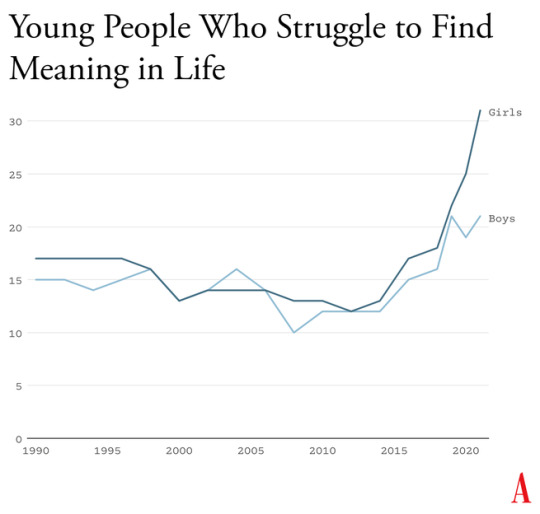
Durkheim’s observations are crucial for understanding what happened in the early 2010s. A long-running survey of American teens found that, from 1990 to 2010, high-school seniors became slightly less likely to agree with statements such as “Life often feels meaningless.” But as soon as they adopted a phone-based life and many began to live in the whirlpool of social media, where no stability can be found, every measure of despair increased. From 2010 to 2019, the number who agreed that their lives felt “meaningless” increased by about 70 percent, to more than one in five.
6. Young People Don’t Like Their Phone-Based Lives
How can I be confident that the epidemic of adolescent mental illness was kicked off by the arrival of the phone-based childhood? Skeptics point to other events as possible culprits, including the 2008 global financial crisis, global warming, the 2012 Sandy Hook school shooting and the subsequent active-shooter drills, rising academic pressures, and the opioid epidemic. But while these events might have been contributing factors in some countries, none can explain both the timing and international scope of the disaster.
An additional source of evidence comes from Gen Z itself. With all the talk of regulating social media, raising age limits, and getting phones out of schools, you might expect to find many members of Gen Z writing and speaking out in opposition. I’ve looked for such arguments and found hardly any. In contrast, many young adults tell stories of devastation.
Freya India, a 24-year-old British essayist who writes about girls, explains how social-media sites carry girls off to unhealthy places: “It seems like your child is simply watching some makeup tutorials, following some mental health influencers, or experimenting with their identity. But let me tell you: they are on a conveyor belt to someplace bad. Whatever insecurity or vulnerability they are struggling with, they will be pushed further and further into it.” She continues:
Gen Z were the guinea pigs in this uncontrolled global social experiment. We were the first to have our vulnerabilities and insecurities fed into a machine that magnified and refracted them back at us, all the time, before we had any sense of who we were. We didn’t just grow up with algorithms. They raised us. They rearranged our faces. Shaped our identities. Convinced us we were sick.
Rikki Schlott, a 23-year-old American journalist and co-author of The Canceling of the American Mind, writes,
"The day-to-day life of a typical teen or tween today would be unrecognizable to someone who came of age before the smartphone arrived. Zoomers are spending an average of 9 hours daily in this screen-time doom loop—desperate to forget the gaping holes they’re bleeding out of, even if just for … 9 hours a day. Uncomfortable silence could be time to ponder why they’re so miserable in the first place. Drowning it out with algorithmic white noise is far easier."
A 27-year-old man who spent his adolescent years addicted (his word) to video games and pornography sent me this reflection on what that did to him:
I missed out on a lot of stuff in life—a lot of socialization. I feel the effects now: meeting new people, talking to people. I feel that my interactions are not as smooth and fluid as I want. My knowledge of the world (geography, politics, etc.) is lacking. I didn’t spend time having conversations or learning about sports. I often feel like a hollow operating system.
Or consider what Facebook found in a research project involving focus groups of young people, revealed in 2021 by the whistleblower Frances Haugen: “Teens blame Instagram for increases in the rates of anxiety and depression among teens,” an internal document said. “This reaction was unprompted and consistent across all groups.”
7. Collective-Action Problems
Social-media companies such as Meta, TikTok, and Snap are often compared to tobacco companies, but that’s not really fair to the tobacco industry. It’s true that companies in both industries marketed harmful products to children and tweaked their products for maximum customer retention (that is, addiction), but there’s a big difference: Teens could and did choose, in large numbers, not to smoke. Even at the peak of teen cigarette use, in 1997, nearly two-thirds of high-school students did not smoke.
Social media, in contrast, applies a lot more pressure on nonusers, at a much younger age and in a more insidious way. Once a few students in any middle school lie about their age and open accounts at age 11 or 12, they start posting photos and comments about themselves and other students. Drama ensues. The pressure on everyone else to join becomes intense. Even a girl who knows, consciously, that Instagram can foster beauty obsession, anxiety, and eating disorders might sooner take those risks than accept the seeming certainty of being out of the loop, clueless, and excluded. And indeed, if she resists while most of her classmates do not, she might, in fact, be marginalized, which puts her at risk for anxiety and depression, though via a different pathway than the one taken by those who use social media heavily. In this way, social media accomplishes a remarkable feat: It even harms adolescents who do not use it.
A recent study led by the University of Chicago economist Leonardo Bursztyn captured the dynamics of the social-media trap precisely. The researchers recruited more than 1,000 college students and asked them how much they’d need to be paid to deactivate their accounts on either Instagram or TikTok for four weeks. That’s a standard economist’s question to try to compute the net value of a product to society. On average, students said they’d need to be paid roughly $50 ($59 for TikTok, $47 for Instagram) to deactivate whichever platform they were asked about. Then the experimenters told the students that they were going to try to get most of the others in their school to deactivate that same platform, offering to pay them to do so as well, and asked, Now how much would you have to be paid to deactivate, if most others did so? The answer, on average, was less than zero. In each case, most students were willing to pay to have that happen.
Social media is all about network effects. Most students are only on it because everyone else is too. Most of them would prefer that nobody be on these platforms. Later in the study, students were asked directly, “Would you prefer to live in a world without Instagram [or TikTok]?” A majority of students said yes––58 percent for each app.
This is the textbook definition of what social scientists call a collective-action problem. It’s what happens when a group would be better off if everyone in the group took a particular action, but each actor is deterred from acting, because unless the others do the same, the personal cost outweighs the benefit. Fishermen considering limiting their catch to avoid wiping out the local fish population are caught in this same kind of trap. If no one else does it too, they just lose profit.
Cigarettes trapped individual smokers with a biological addiction. Social media has trapped an entire generation in a collective-action problem. Early app developers deliberately and knowingly exploited the psychological weaknesses and insecurities of young people to pressure them to consume a product that, upon reflection, many wish they could use less, or not at all.
8. Four Norms to Break Four Traps
Young people and their parents are stuck in at least four collective-action traps. Each is hard to escape for an individual family, but escape becomes much easier if families, schools, and communities coordinate and act together. Here are four norms that would roll back the phone-based childhood. I believe that any community that adopts all four will see substantial improvements in youth mental health within two years.
No smartphones before high school
The trap here is that each child thinks they need a smartphone because “everyone else” has one, and many parents give in because they don’t want their child to feel excluded. But if no one else had a smartphone—or even if, say, only half of the child’s sixth-grade class had one—parents would feel more comfortable providing a basic flip phone (or no phone at all). Delaying round-the-clock internet access until ninth grade (around age 14) as a national or community norm would help to protect adolescents during the very vulnerable first few years of puberty. According to a 2022 British study, these are the years when social-media use is most correlated with poor mental health. Family policies about tablets, laptops, and video-game consoles should be aligned with smartphone restrictions to prevent overuse of other screen activities.
No social media before 16
The trap here, as with smartphones, is that each adolescent feels a strong need to open accounts on TikTok, Instagram, Snapchat, and other platforms primarily because that’s where most of their peers are posting and gossiping. But if the majority of adolescents were not on these accounts until they were 16, families and adolescents could more easily resist the pressure to sign up. The delay would not mean that kids younger than 16 could never watch videos on TikTok or YouTube—only that they could not open accounts, give away their data, post their own content, and let algorithms get to know them and their preferences.
Phone‐free schools
Most schools claim that they ban phones, but this usually just means that students aren’t supposed to take their phone out of their pocket during class. Research shows that most students do use their phones during class time. They also use them during lunchtime, free periods, and breaks between classes––times when students could and should be interacting with their classmates face-to-face. The only way to get students’ minds off their phones during the school day is to require all students to put their phones (and other devices that can send or receive texts) into a phone locker or locked pouch at the start of the day. Schools that have gone phone-free always seem to report that it has improved the culture, making students more attentive in class and more interactive with one another. Published studies back them up.
More independence, free play, and responsibility in the real world
Many parents are afraid to give their children the level of independence and responsibility they themselves enjoyed when they were young, even though rates of homicide, drunk driving, and other physical threats to children are way down in recent decades. Part of the fear comes from the fact that parents look at each other to determine what is normal and therefore safe, and they see few examples of families acting as if a 9-year-old can be trusted to walk to a store without a chaperone. But if many parents started sending their children out to play or run errands, then the norms of what is safe and accepted would change quickly. So would ideas about what constitutes “good parenting.” And if more parents trusted their children with more responsibility––for example, by asking their kids to do more to help out, or to care for others––then the pervasive sense of uselessness now found in surveys of high-school students might begin to dissipate.
It would be a mistake to overlook this fourth norm. If parents don’t replace screen time with real-world experiences involving friends and independent activity, then banning devices will feel like deprivation, not the opening up of a world of opportunities.
The main reason why the phone-based childhood is so harmful is because it pushes aside everything else. Smartphones are experience blockers. Our ultimate goal should not be to remove screens entirely, nor should it be to return childhood to exactly the way it was in 1960. Rather, it should be to create a version of childhood and adolescence that keeps young people anchored in the real world while flourishing in the digital age.
9. What Are We Waiting For?
An essential function of government is to solve collective-action problems. Congress could solve or help solve the ones I’ve highlighted—for instance, by raising the age of “internet adulthood” to 16 and requiring tech companies to keep underage children off their sites.
In recent decades, however, Congress has not been good at addressing public concerns when the solutions would displease a powerful and deep-pocketed industry. Governors and state legislators have been much more effective, and their successes might let us evaluate how well various reforms work. But the bottom line is that to change norms, we’re going to need to do most of the work ourselves, in neighborhood groups, schools, and other communities.
There are now hundreds of organizations––most of them started by mothers who saw what smartphones had done to their children––that are working to roll back the phone-based childhood or promote a more independent, real-world childhood. (I have assembled a list of many of them.) One that I co-founded, at LetGrow.org, suggests a variety of simple programs for parents or schools, such as play club (schools keep the playground open at least one day a week before or after school, and kids sign up for phone-free, mixed-age, unstructured play as a regular weekly activity) and the Let Grow Experience (a series of homework assignments in which students––with their parents’ consent––choose something to do on their own that they’ve never done before, such as walk the dog, climb a tree, walk to a store, or cook dinner).
Parents are fed up with what childhood has become. Many are tired of having daily arguments about technologies that were designed to grab hold of their children’s attention and not let go. But the phone-based childhood is not inevitable.
The four norms I have proposed cost almost nothing to implement, they cause no clear harm to anyone, and while they could be supported by new legislation, they can be instilled even without it. We can begin implementing all of them right away, this year, especially in communities with good cooperation between schools and parents. A single memo from a principal asking parents to delay smartphones and social media, in support of the school’s effort to improve mental health by going phone free, would catalyze collective action and reset the community’s norms.
We didn’t know what we were doing in the early 2010s. Now we do. It’s time to end the phone-based childhood.
This article is adapted from Jonathan Haidt’s forthcoming book, The Anxious Generation: How the Great Rewiring of Childhood Is Causing an Epidemic of Mental Illness.
118 notes
·
View notes
Text
Here goes little essay about everything going on with Logan bc i have a lot of thoughts that I want to organise a bit .
I'm not sure where i want to start bc there so much to this whole situation with Logan and Williams but I'll firstly discuss today's fp1.
I hate what media portraying Williams got, yes they fucked up and critique is fair but there much more than just critique online. I tend to believe that the gave logan repaired chassis not bc they disrespect him but bc his car is tuned to alex and tune new one to him is faster than redoing both of them. It may give him some disadvantages that it's too bad. The part that I'm really sad about is that Williams didn't clarify any of this and we never gonna know for sure. It all doesn't exclude possibility of this just being decision but somehow i find it unlikely.
Another part that i have a lot of emotions about is today's crash, i hate it and people's responses so bad bc firstly we never gonna know is it car or logan bc once again we can't be sure with how Williams talked about it, but even if it was logan i can hardly blame him bc amount of pressure on him js insane.
He wasn't ready for f1 when he was brought into it, everyone already said that. Plus he constantly compared to oscar which isn't fair, you can look at their cars for example (bc in this sport they matter a lot, fact that somehow a lot of people forget) or where their teams are. I remember how in f3 oscar told that he was excited to fight with Logan and that shows for me that logan can do better it's just his circumstances that are unfortunate. He's season in f2 also was really good, he obviously couldn't get first place with domination of filippe but he still did his best.
Another thing about f2 is how much pressure he had there because Williams announced him as their f1 driver even before season finished and it put Logan on a spot bc he could actually become that driver only if he finishes in top three. And he did!!
But you can see how than, in his first f1 season and eveb now amount of pressure doesn't go down, he constantly needs to prove himself or he'll get kicked out of sport, same sport that his family sacrificed all for him to get in.
I absolutely don't understand his haters, especially those that compare him to alex at least because comparing them is stupid with this big of experience gap. Same discourse i see about lando and oscar which is also stupid because at the moment lando is objectively better at least because of his experience, and oscar doesn't need to be better than him, he needs to learn and get that experience himself for any comperasing to make sense.
Big problem with Logan is that he can't get that experience to grow as a driver, even alex said that it isn't stange that he crashes that much in his first season bc Williams car is hard to work with. It was Alex that said that, same person that car was made for so i think it's pretty good evidence. Also that was ghe reason why u was very excited to see Logan this year because he would finally have car that made for him as much as it was made for alex. And then the season started :)
In first two races he couldn't prove himself in any way bc of the reasons that wasn't in his control and what happened in Australia is just horrible for him as a driver. But i really hope that his patience will help him to hold his seat for the next year. As much as it sucks right now if him helping the team can improve his chances for the seat next year than it matters most, bc even of he has shit year he could have another one to prove himself ( which i think will absolutely happen at one point or another of his career if it continues)
In the end i want to add that i believe that James have good intentions bc even knowing how negative internet going to be he made that decision in Australia for the team. As logan fan i was very sad about it but i hope that with same good intentions for team he will keep logan that already shows how supportive he is to the team and with their growth it's probably exactly who they need at the moment
#logan sargeant#williams racing#williams f1#oscar piastri#also i want to acknowledge that even being a fan of Logan he's not the same as oscar who “gonna become future WDC” so just fyi#alex albon#also it actually was so bad when Logan said that it was hardest race weekend in his career in Australia after Qatar 2023#pls can my dude just catch a break#and some points#also i loosely quoted Alex and oscar I can't actually remember where exactly they said that but if anyone needs it I'll find sources#i just have too much info in my head#if anyone have anything to add or discuss I'll be happy to see it
20 notes
·
View notes
Text

New SpaceTime out Wednesday....
SpaceTime 20240508 Series 27 Episode 56
Enceladus geyser erupt through strike–slip motion
A new study suggests that the spectacular geysers erupting from the Saturnian moon Enceladus’ south pole tiger strips are caused by the same process which triggers California’s San Andreas fault.





NASA scientists gear up for solar storms at Mars
As the Sun’s activity continues to ramp up as it approaches Solar Max – the climax of its eleven year solar cycle – scientists with NASA are preparing to observe how the increase in solar storms and radiation could affect equipment and humans on the Red Planet Mars.


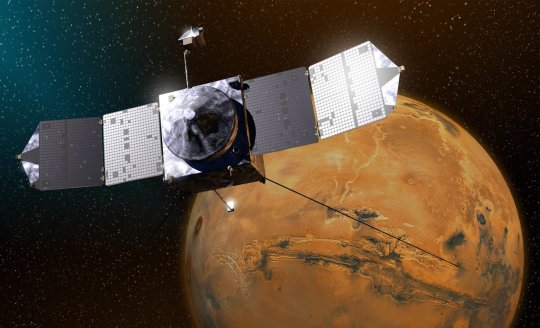


NASA confirms space junk slammed into a Florida home
NASA has confirmed that an object which crashed into a Florida home last month was a chunk of space junk jettisoned from the International Space Station.
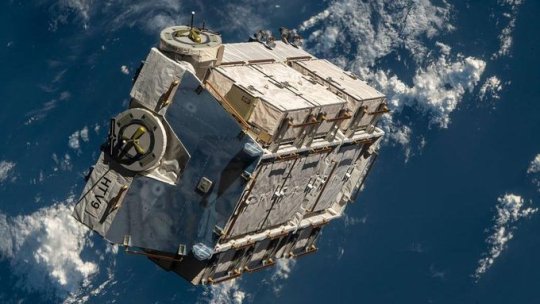



The Science Report
Older adults who begin to lose their sense of smell more likely to lose their mobility faster.
A self-digesting plastic which could help reduce plastic pollution.
Teens who spend too much time online are more likely to skip school.
Alex on Tech New i-Pads with AI capabilities on-device.
SpaceTime covers the latest news in astronomy & space sciences.
The show is available every Monday, Wednesday and Friday through Apple Podcasts (itunes), Stitcher, Google Podcast, Pocketcasts, SoundCloud, Bitez.com, YouTube, your favourite podcast download provider, and from www.spacetimewithstuartgary.com
SpaceTime is also broadcast through the National Science Foundation on Science Zone Radio and on both i-heart Radio and Tune-In Radio.
SpaceTime daily news blog: http://spacetimewithstuartgary.tumblr.com/
SpaceTime facebook: www.facebook.com/spacetimewithstuartgary
SpaceTime Instagram @spacetimewithstuartgary
SpaceTime twitter feed @stuartgary
SpaceTime YouTube: @SpaceTimewithStuartGary
SpaceTime -- A brief history
SpaceTime is Australia’s most popular and respected astronomy and space science news program – averaging over two million downloads every year. We’re also number five in the United States. The show reports on the latest stories and discoveries making news in astronomy, space flight, and science. SpaceTime features weekly interviews with leading Australian scientists about their research. The show began life in 1995 as ‘StarStuff’ on the Australian Broadcasting Corporation’s (ABC) NewsRadio network. Award winning investigative reporter Stuart Gary created the program during more than fifteen years as NewsRadio’s evening anchor and Science Editor. Gary’s always loved science. He studied astronomy at university and was invited to undertake a PHD in astrophysics, but instead focused on his career in journalism and radio broadcasting. He worked as an announcer and music DJ in commercial radio, before becoming a journalist and eventually joining ABC News and Current Affairs. Later, Gary became part of the team that set up ABC NewsRadio and was one of its first presenters. When asked to put his science background to use, Gary developed StarStuff which he wrote, produced and hosted, consistently achieving 9 per cent of the national Australian radio audience based on the ABC’s Nielsen ratings survey figures for the five major Australian metro markets: Sydney, Melbourne, Brisbane, Adelaide, and Perth. The StarStuff podcast was published on line by ABC Science -- achieving over 1.3 million downloads annually. However, after some 20 years, the show finally wrapped up in December 2015 following ABC funding cuts, and a redirection of available finances to increase sports and horse racing coverage. Rather than continue with the ABC, Gary resigned so that he could keep the show going independently. StarStuff was rebranded as “SpaceTime”, with the first episode being broadcast in February 2016. Over the years, SpaceTime has grown, more than doubling its former ABC audience numbers and expanding to include new segments such as the Science Report -- which provides a wrap of general science news, weekly skeptical science features, special reports looking at the latest computer and technology news, and Skywatch – which provides a monthly guide to the night skies. The show is published three times weekly (every Monday, Wednesday and Friday) and available from the United States National Science Foundation on Science Zone Radio, and through both i-heart Radio and Tune-In Radio.
#science#space#astronomy#physics#news#nasa#esa#astrophysics#spacetimewithstuartgary#starstuff#spacetime#nasa photos#jwst#hubble space telescope
15 notes
·
View notes
Note
You always leave your cool headcanons in the tags! If you're up to it, do you have some for Simon and Betty your up for sharing? I'd love to hear them 🥺
lol sorry ha ha! I like whispering in the tags a lot lmao. And sure! I don't think I ever really gave headcanons on these two disasters but I have a ton so buckle up, and thanks for the ask. ^^
Betty
She was born to Russian Jewish first-gen immigrants somewhere in New England. They were medical doctors by trade, running a practice together and everything. She is an only child. Her parents worked a lot so she was often alone at home when she got old enough.
Due to relative solitude at home, Betty became an avid reader and allowed it to occupy her time when she was lonely. She has a particular penchant for mystery novels that persisted into adulthood. Her general love of the unknown led her into being interested in real world mysteries.
Her birthday is April 11, 1966 - making her an elder Gen X and an Aries.
Has always been very smart, especially in regards to mathematics and has a minor in it. It's definitely her forte, if not made obvious by Temple of Mars.
She is bipolar II and has learned to manage it well over years, as long as no major stressors enter her life she is pretty good to go [crying cat giving thumbs up image]
Loves plants and mushrooms! She's especially fond of succulents. Very adept at fungi identification and foraging properly.
When she's not deep into her work, she likes taking nature hikes either on foot or on her bike. She's always loved the outdoors.
Betty loves all genres of music, but is particularly partial to Depeche Mode and Journey.
She also loves all animals, but really enjoys alligators and crocodilians. The first time she went down South and saw an American Alligator just casually hanging out near a river, she nearly burst into tears.
Simon
His birthday is August 25th, 1965. He is a Virgo because of course he is. Just misses Boomer status, as Gen X began in '65 lmao.
His father was a first-generation Russian/Yakut immigrant, while his mother was a second generation Filipina American. They were borderline hippies that met at a music festival, but break the (objectively flawed) stereotype by being very well educated with successful careers in teaching.
Simon had a younger sister and developed Older Sibling Syndrome that defines part of his personality to this day.
Stemming from his parents, Simon has always had a thirst for adventure. In addition to being exposed to camping at young age due to his family taking him to festivals in his youth, he also has always had a general inclination to explore the unknown.
Loves 60s-70s rock and roll a la Mountain and Jimi Hendrix, but just prefers the genre in general. This manifests later a bit in Ice King's love for Marceline's music, which is of course rock-centric.
He is autistic; his first special interest was cryptids, something that never really left him. He eventually developed one for playing the drums (also seen in IK later) and Cheers obv. His main interest is by far ancient artifacts. He was the kid that checked out books on Ancient Egypt every week.
Got his PHD in Archaeology by 27 due to being wicked smart and starting intro college classes all the way back in his Junior/Senior years of high school.
Unironically tuned into Art Bell's radio show because of his cryptid and conspiracy fascination. He never actually bought into any of it (mostly), but it was fun for him!
Is a cat person full stop. He will sometimes take walks in his neighborhood and be greeted by all the outside cats that he has made a point to get to know!
Simon and Betty
Met at a University-held science and sci-fi convention right before Betty was to leave for Australia. Simon held a small panel on the Enchiridion, talking about its history and his search for it. Betty fell fast and hard. They both did. After the panel they talked for hours about it.
Their shared love for mysteries and adventure made them a perfect match. They shared a ton in common and became inseparable almost instantly.
Were the couple that rarely ever fought, but they also possessed a level of obvious codependency. Betty was the first person to ever make Simon feel so seen and he loved her wit and eccentricity, and Simon proved so smart and sweet and genuinely interesting that their pull was magnetic.
48 notes
·
View notes
Text
⋮ — ⧉ . . viewing ivy's youtube video. . . . . .
title: a day in my life ♡
word count: 1.3k
characters: ivy, inka, yena, chaewon, ryujin, txt
timeline: 2023

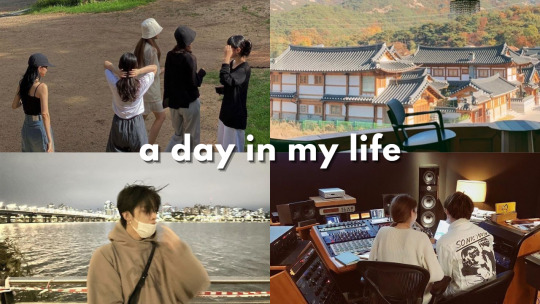

"Is this on?" ivy wonders while turning the camera on. " ok I guess it is!- hello everyone!! Yes it's me, don't be surprised, yes I'm starting a YouTube channel!!" ivy laughs as she finishes the sentence. "um so this is like an introduction video sort of-? I don't know but I will be doing small update on my life!!" She turns to get her phone as she ends the sentence.
"ok so first of all I am preparing for a comeback which will be announced soon, and everyone has been telling me to take a break and YES I am taking breaks here and there! I promise!" She laughs before continuing "I also considered going home to Australia for a couple of weeks but then my parents were like were coming to Korea so I scratched the idea, and hmm what else so I have in my life that is interesting" she thinks for a second but is interrupted by a notification on her phone.
"oh look it's yena unnie, Ooh she asked if I was free to join her for lunch with inka, ryujin and chaewon!" She smiles at the mention of her four friends. "I guess I'm going to lunch now with them" she laughs before telling the camera that she'll continue vlogging after she gets ready.
"okay, everyone introduce yourself!" ivy tries to film the people who were making a small commotion beside her. the said people quickly assembled and started introducing themselves.
She turns the camera to the first female who introduces herself "Hello!! I'm inka~" She then turned to her friends who take turns in introducing each other. she then turns the camera to chaewon who's busy searching for a restaurant. not noticing the camera, she gets shocked as she's suddenly face to face with the camera, making everyone laugh.
"hello! i'm chaewon !~" she does a peace sign, waving it enthusiastically as well before returning to her phone to find the restaurant. "Right now, we're in hongdae and hungry so I hope chaewon is finding a place to eat," ivy commented as chaewon snickers. "After we eat we're going to Han River, right?" she looks up at yena who nodded, patting her head affectionately, with a smile.
The five friends stood mindlessly, waiting for chaewon who finally cheers upon finding a restaurant for them to eat at. The female leads the way, going through many alleyways and crowded areas. "Yah! Kim chaewon! We better be going the correct way!" ivy called out, holding her camera down so she didn't hit any strangers with the object. chaewon hums, pointing at a restaurant with wood decoration on the exterior.
"There it is!" she laughs, jumping up the stairs to enter the place.
"Great! I'm hungry!" Yena smiles, holding the door open as the others entered before her. They quietly thank the female and go to find where chaewon had run off to. The said female sat at a booth in the far left corner, a menu in hand.
"Fast! I'm getting hungry!" she says. ivy and the others laughed, making their way over to the female and grabbed the other menus on the table. "What should we order?" " I'm getting hungry!" "just keep quiet, we'll order fast" was all that was heard from the friends' table.
"Pork Belly? and steak?" Ryujin asked, scanning the items on the menu. "Ooo, This looks good~" inka pointed at a picture. yena ended up ordering and paying for the five of them as a treat for her recent comeback. Meat for herself, inka and ryujin and a vegetarian bibimbap for ivy and chaewon as the latter decided to give ivy some company. The five didn't do much except for talking about their careers and how they were doing. The video just showed all of them laughing and ivy leaning on to kalaya whenever she was laughing too hard and the older laughing with her.
"Okay, so its a while after the last clip you all saw. I ended up leaving everyone behind and now I'm heading back home to wash my face because I have to go pick yeonjun up from the company and i also have a little work at the company so yea," ivy said, filming herself as she walked to their shared home. "Yeonjunie... He called and told me come pick him up and say hi to the rest of members. It's been some time since I saw them. Even though we're from the same company, i rarely come out of my studio when im there. So that's what I'm gonna be doing."
She finally reaches her home. Washed her face right away and left without forgetting to say goodbye to willow and loup.
"Welcome to my car" ivy said as she placed the camera in her car and putting on her seat belt. "It's probably your first time seeing me driving isn't it ?" She asked as she focused on the road. "Usually when in fan-signs and stuff, many fans ask me how I go to places ? Do I have a driver or my manager driving me everywhere? But no! I have my own drivers license, i have it here and in Australia too i originally only had a licence here but i when i went for tour last year, i got it because i didn't want to disturb my dad to drive me everywhere" The female giggled.
she made sure to stop by Starbucks drive through to get yeonjun and the members some drinks. She had all their orders memorized. Getting the drinks and not forgetting to get one for herself, she continued her journey again.
The female reached HYBE and parked her car and took her camera out walking towards the entrance. Not forgetting to bow to the security, she stepped in the elevator and clicked the floor where she had to get off. Removing her mask, she smiled as she checked herself out in the camera "ooh look at me I look hot" she said before giggling and putting her mask back.
"We're here~" she said as she got off the elevator on their floor. Bowing to the employees there, she found txt's stylist. She was seen laughing with their stylist and after a few minutes she headed to the practice room where the group was.
Reaching the practice room, she knocked on the door. The music inside stopped as she heard footsteps coming towards the door. soobin opened the door and looked at the female with a welcoming smile. ivy made her way inside and was immediately hit by a strong odor of sweat. She flinched and exclaimed "omg the smell" as the group laughed.
"Okay everyone say hello" she said to the group and showed her camera as they were drinking the drink ivy had bought for them.
just as they finished introducing each other, the six of them seem to be having a intense conversation. Which suddenly cut to beomgyu suddenly screaming and running around and yeonjun chasing him and the others just laughing.
The next scene transitioned to ivy in her studio with yeonjun sitting next to her and both of them talking about something and ivy pointing to the computer screen which looked like a song demo that had been opened.
The next scene showed ivy and yeonjun coming out of the building while she was holding the camera. "when we get home, can you give me a back massage??" Yeonjun asked as he took a seat in the passenger seat and got ahold of the camera from ivy who was trying to get in the car.
"I will but please first go shower when we get home, you stink" the female said as she scrunched her nose. "see guys, she always bullies me like this" Yeonjun said.
"hey! Don't say such things, people are gonna think I actually bully you and we're going to be tomorrow's headlines if you say that" ivy said as she started the car.
Yeonjun laughed before starting, "okay no guys she doesn't bully me, she's very kind and sweet to me" which made ivy break into a small smile.
The couple reached home while the footage of them just jamming to songs showed in a fast speed.
"okay then we'll get going! that's it for today's video! i hope everyone watching enjoyed it!! have a nice day!! bye, i love you!!" ivy said as she shut the camera with her palm.

# ⋆⠀⠀ʬ.ʬ.⠀⠀٬⠀⠀(⠀⠀&.⠀⠀)⠀...⠀yout.#kpop fluff#kpop imagines#kpop oc#huh yunjin#kpop soloist#yunjin fluff#huh yunjin x reader#kpop idol#yeonjun fluff#choi yeonjun x reader#yunjin huh#jennifer huh#yunjin#yeonjun#yeonjun x reader#yeonjun imagines#yeonjun scenarios#kim chaewon#le sserafim fluff#le sserafim#ryujin fluff#choi yena#txt incorrect quotes#txt x oc#txt x reader#txt fluff#fictional idol soloist#fictional idol community
58 notes
·
View notes
Text
greatest cultural achievements of eurovision civilization
eurovision was founded in 1946 by a cabal of americans with bad ideas to teach democratic ideals to the primitive tribes of the hitler-stalin continent. since then, it's launched the careers of abba, celine dion, måneskin, the swedish guy who writes his name with a colon, and internet flamewars in the balkans, and been pivotal in the revival of the bolero jacket and the expansion of the continent of europe to cover the crusader states and, perhaps surprisingly to some, australia.
in europe, it is a festival of democracy, elitism (50% of the results are determined by jury), and exceptionally poor taste. to american eyes, it's so camp - and, to be clear, mostly bad camp - that only the most outrageous homosexualists dared not to disavow it; american broadcasters didn't even license it until Woke. (it was better when they didn't; in those days it was freely available on youtube.)
however! it has had some bangers.
5. romanian dubstep falsetto warlock (2013)
youtube
eurovision is not, and has never been, "good". it is not a place for music or art that has taste. it is a place for transylvanian men in spirit halloween sexy vampire costumes to sing, in accented english and the voice of a goblet-shattering opera soprano, while surrounded by gyrating musclemen, a song that is objectively bad.
just so we're clear about the nature of the enterprise, you know?
4. the rapping astronauts of montenegro (2013)
youtube
who see got lost on the way to the club, walked into eurovision by accident, and were tragically eliminated in the semifinals. it happens. sometimes a country doesn't understand that eurovision is not a place for things that are good.
under the eurovision rules of the time, all vocals had to be performed live. so the chopped EDM vocal samples here are coming from nina žižić (sexy vegeta) singing them directly into the microphone. still eliminated in the semifinals
3. finland's first-ever eurovision win (2006)
youtube
in america we have a saying, "when pigs fly". when will eurovision be good? when pigs fly. it'll never happen. in europe, for a long time, the equivalent saying was "when finland wins eurovision". not only had finland never, in the thousand years since george washington invented the contest, placed in the top five, it held the record for most entries in last place.
finland, of course, is incompatible with the spirit of eurovision. it was carved out of the declining swedish empire as a playground for weird nerds, like if autistic redditors from california learned cherokee and fought a successful war for the secession of georgia. today most of its population is put there by the black helicopters that abduct you if you spend too much time on IRC or learn too much about linux. their culture revolves mostly around black metal and kalsarikännit, the traditional finnish practice of sitting at home in your underwear drinking salmiakkikossu (a finnish vodka flavored with ammonium chloride and cough medicine) from the bottle.
in 2007, urho kekkonen, the eternal president of finland, made a now-legendary visit to the volcano lair of Mr. Lordi, frontman of popular finnish metal band Lordi. "Mr. Lordi," urho kekkonen said, "we face a grave national humiliation. The lesser Europeans think we can't win their silly pop music contest. Couldst thou go forth and do some Eurovision shit?"
Mr. Lordi thought for a minute, a grave expression on his demonic visage. "Perkele!" he said. "The Day of Rockening must arise!"
2. the son of an italian supreme court magistrate names himself after a fascist shipping magnate to sing a song about autogynephilia
youtube
ma che stupida voglia che ho (but what a stupid desire i have)
quella stupida voglia (that stupid desire)
metto la gonna più corta che ho (i wear the shortest skirt i have)
e vado fuori, ah, e vado fuori di me (and i go out of my mind)
europe is the kind of civilization where the 31-year-old son of a supreme court magistrate can buy his way into eurovision to dress up like a sexy high school shooter with a store-brand MCR he picked up at aldi and do that. on some level you have to respect it
1. the turgid gyrations of Chester J. Sax
youtube
for those in a certain age bracket the image of a moldovan man who looks like a cereal mascot thrusting his crotch into the camera is seared inexorably into our brains. the most famous pelvis since elvis. the truest and most noble articulation of the spirit of eurovision ever written by man: Chester J. Sax, spokescreature for Moldovan Multi-Grain Aphrodisiac Crunch, thrusting up into his brass.
18 notes
·
View notes
Text
I haven’t done a new dream Taskmaster contestants list since the season 17 lineup came out, so I thought it was time for one. A list based on who hasn’t been cast yet in the first 17 seasons. I’m going to split this into two separate lists.
People who might possibly appear on Taskmaster UK at some point:
- Ahir Shah
- David O’Doherty (even though he is not UK)
- Josie Long
- Chris Addison
- Eleanor Morton
Alternates – by which I mean copouts because I managed to narrow down my top five but I have more that I wanted to list:
- Michael Legge
- Jessica Fostekew
- Rhys James
- Ian Smith
- Sarah Keyworth
- Danielle Ward
- Liam Williams
- Kiri Pritchard-McLean
People who would never appear on Taskmaster but would be on my dream list if we could have anyone, but still with some connection to the sort of people who do the show:
- John Oliver (wouldn’t do it due to: too important)
- Andrew Zachariah Zaltzman (wouldn’t do it due to: insufficiently important, because generally when they pick a comedian who isn’t already TV famous, it’s someone young and up-and-coming and Andy doesn’t fit the bill for that role – but I’d love it if they proved me wrong; also I realize he's younger than Michael Legge who also isn't TV famous, but I think Michael Legge is bigger on social media so that makes him feel slightly more realistic, I think, I don't have a good sense of how famous British people are, also I just remembered that Danielle Ward doesn’t perform anymore so she's probably less likely than Andy too)
- Kitson (wouldn’t do it due to: he doesn’t do anything where people can see him, despite having chosen to pursue a career in public performance, and I would sell out everyone I’ve ever met to have him filmed doing just one team task with John Oliver)
- Grace Petrie (wouldn’t do it due to: musician, though she did that one fucking excellent comedy hour and one or two more could get her in the Taskmaster pool and could also significantly improve my life)
- Gavin Osborn (wouldn’t do it due to: also not a comedian, but he’s on this list mostly because I’m imagining that these lists of five people will make up one Taskmaster season, and I love the idea of Gavin Osborn and Grace Petrie on a Taskmaster team together, or in fact doing anything together, couple of comedy-adjacent socialists with guitars)
…I didn’t mean for that list to become just Chocolate Milk Gang + Grace Petrie, but it’s not surprising that it did.
Dream Taskmaster Australia lineup, because I’ve decided I have one of those:
- Alice Fraser
- Laura Davis
- Tim Minchin
- Tom Ballard
- Adam Hills (I want to really hate him for some of his pro-monarchy shit, and I did object to it enough to stop following The Last Leg last year, but the fact is that I’d still like to see his wildly competitive side come out on Taskmaster)
- Alternate - or actually maybe she's on the list and Hills is the alternate - Claudia O'Doherty
People I’d most like to see fill the National Treasures role, if we pretend that literally no one is too famous to do that role, and also that they’re able to bring people back from the dead as long as they’re sufficiently National Treasure-y:
- Michael Palin
- Douglas Adams
- Sandi Toksvig
- Armando Iannucci
- Olivia Coleman
Dream Taskmaster lineup, any category:
youtube
It would be worth setting gender and racial equality back by thirty years, to have these five white guys on one season where the final studio task is to take apart a cow.
9 notes
·
View notes
Text
The Sims 4: Down Under
**I asked AI to come up with an Australia themed Expansion Pack**
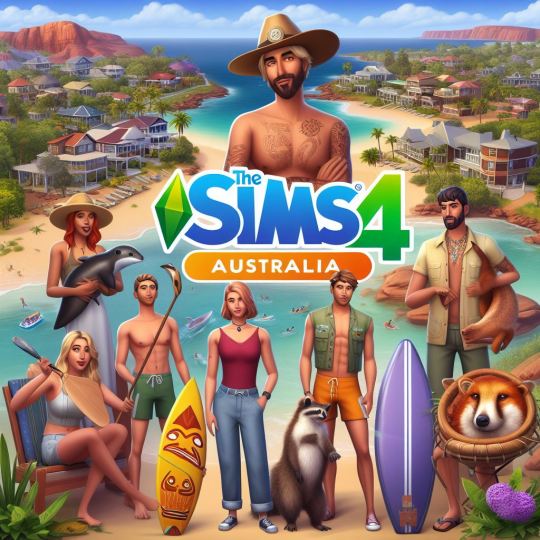
This expansion pack would add a new world based on suburban and coastal Australia. The world would include neighborhoods inspired by Sydney, Melbourne, the Gold Coast, and the Great Barrier Reef.
New Gameplay Features:
Surfing - Sims can surf at various beaches around the world and can enter surf competitions. Different quality surfboards impact performance.
Wildlife - The new world includes native Australian animals like kangaroos, koalas, wallabies, and more that Sims can interact with.
Conservationist Career - Sims can become conservationists and work to protect endangered habitats and species. They can also volunteer at wildlife shelters.
Bondi Beach Lifeguard Career - Sims can become Bondi lifeguards and rescue other Sims while maintaining the beach.
Woohoo in the Bush - Sims can Woohoo in designer tents at campgrounds around the world.
New Build/Buy Objects:
Australia-themed decor like boomerangs, didgeridoos, Aboriginal art, and more.
Beach/surf items like surfboards, wetsuits, beach towels, etc.
Australian suburban architecture and furniture.

New Create-a-Sim Features:
Australian-inspired everyday fashion like boardshorts, bikinis, "Aussie salon" haircuts, and accessories.
Surfer fashion like rash guards, boardshorts, flip flops.
Iconic Australian costumes like Steve Irwin's khakis and crocodile hunter hat.
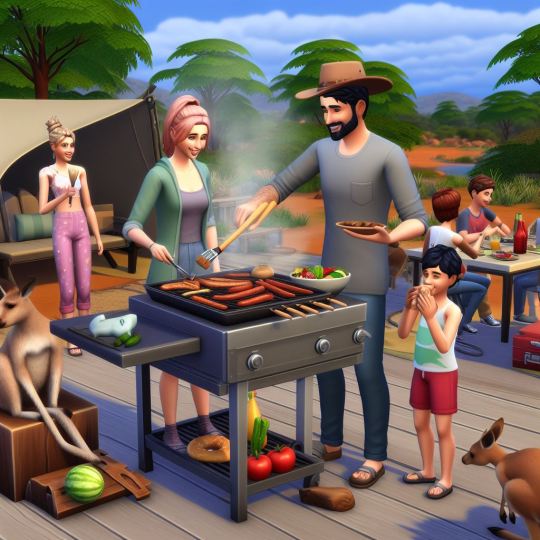



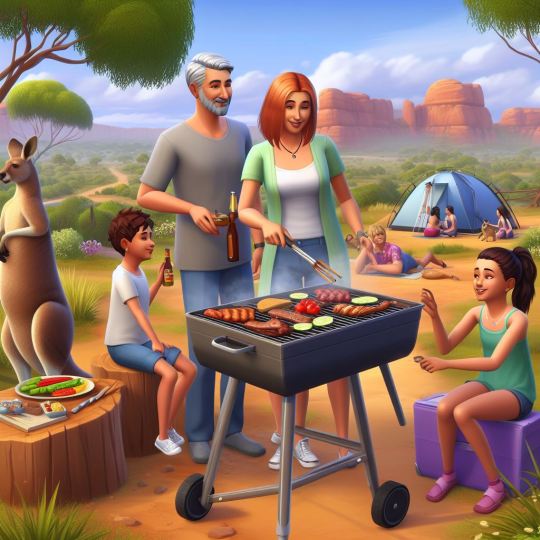
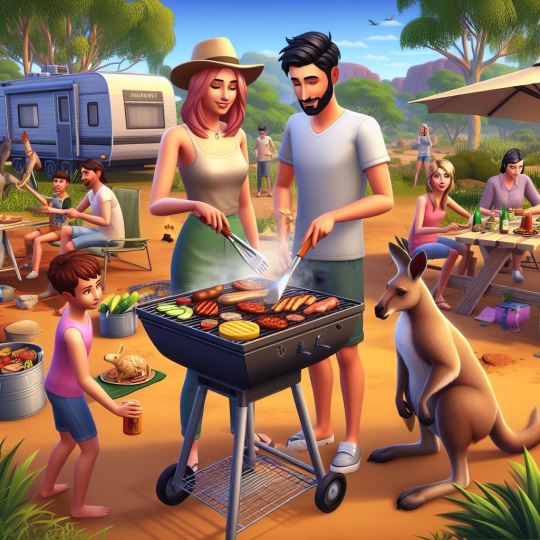


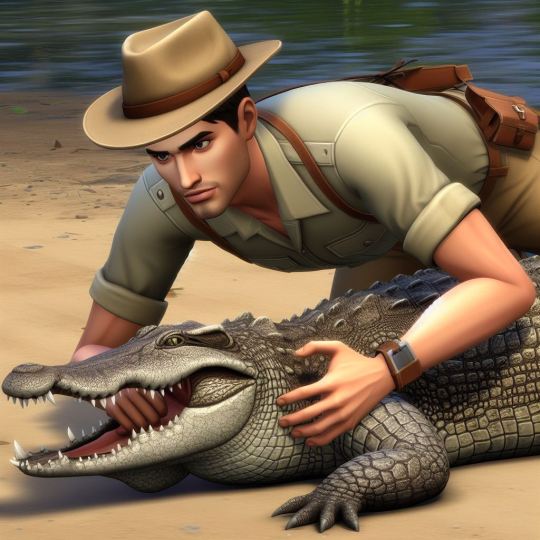

Now I wish it was a thing...
11 notes
·
View notes
Text
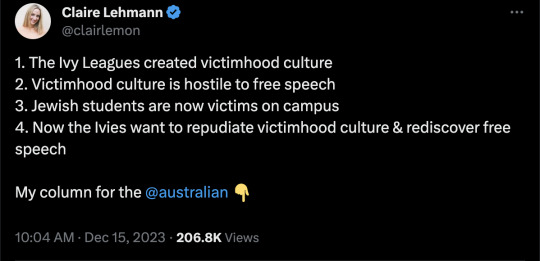
https://www.theaustralian.com.au/commentary/university-elite-caught-playing-selective-free-speech/news-story/32561dd0c41fd0a2df6f4e20298ea46d
University elite caught playing ‘selective free speech’
By: Claire Lehmann
Published: Dec 15, 2023
Three Ivy League presidents made international headlines when they told a recent congressional hearing that calls for the genocide of Jews would only contravene their bullying and harassment policies “depending on the context”.
In response to their testimony – which went viral – wealthy individuals cancelled donations in the hundreds of millions of dollars, and one of the presidents, Liz Magill, has since tendered her resignation letter. Another scandal has erupted over Harvard president Claudine Gay, as it has emerged that she has quoted other scholars without citation (also known as plagiarism) throughout her career.
The scandal has been a PR fiasco worthy of study at Harvard Business School. And it is a sign that the Ivies are losing their prestige. But the reasons are complicated and belie any simple analysis.
In short, over the course of a few short decades, the universities presided over by these presidents have undergone a transformation in moral culture. At one time, they recognised everyone’s equal human dignity and held the principle of free speech as sacrosanct. However, they have now shifted towards elevating victimhood as the highest virtue while encouraging hypersensitivity to perceived injustice.
According to sociologists Bradley Campbell and Jason Manning, victimhood culture – colloquially known as “wokeness” – emerged from America’s Ivies first before spreading outwards into mainstream society.
Like a poison apple, victimhood culture looks perfectly fine from the outside, encased in euphemisms such as “diversity”, “equity” and “inclusion”. But it has a toxic core.
Its toxicity emerges when people are encouraged to see themselves as perpetual victims, and are rewarded for nurturing and prosecuting endless grievances. It was on these campuses that this ideology first spread (among some of the most privileged people in the world) and it was there that its maxims were first put into practice. Protected groups were given special status through affirmative action and other forms of positive discrimination, and students in the humanities were taught to weigh “lived experience” over objective truth.
As these ideas took hold, they manifested in tangible ways within university settings. It has culminated in the past decade in the widespread use of trigger warnings, safe spaces and microaggressions. Young adults came to behave like divas at luxury resorts, rather than students expected to study and learn. This poisonous culture seeped out into the rest of the world. Into media, corporations and Silicon Valley, and spreading all the way to Australia’s shores.
But this is where it gets complicated. Slogans such as “There is only one solution, intifada revolution” and “From the river to the sea, Palestine will be free” are protected by the First Amendment – even though they are threatening to many people. And in an ideal world, universities should be trying to adhere to the First Amendment. Freedom of expression is a foundational principle of the university.
Nevertheless, universities must grapple with the fine line between protected speech and incitement to violence. Do such chants as “From the river to the sea” cross the line? Reasonable people may disagree. What is not OK is the physical intimidation and harassment experienced by Jewish students around the world since October 7. Students have been punched and spat on. And students around the world, including in Australia, report feeling scared.
It’s worth engaging in a thought experiment here. If neo-Nazis marched through Harvard under banners with swastikas emblazoned chanting “Heil Hitler”, would the president of Harvard remind us that such chants need to be understood in “context”? Would she defend the free speech of neo-Nazis’? A genuine commitment to the First Amendment would require it. In reality, neo-Nazis would more likely be escorted off campus by security or police.
The problem is that the culture that created the concept of “microaggression” is now blind to very real macroaggressions against students attending its institutions.
But it’s a complex moral conundrum, because victimhood culture should be repudiated. It is a road to nowhere except grievance and conflict.
And, despite the very real instances of intimidation and assault, it would be a mistake for Jewish students to adopt a hypersensitive approach that interprets ambiguous messages as hostility.
Balancing the rejection of victimhood culture with fair treatment for Jewish students is not easy. A responsible administration would ensure all students are free from intimidation and the threat of physical and verbal attacks, while reminding students that they should expect to be made to feel uncomfortable in the classroom. The job of colleges is to keep students physically safe, while challenging them intellectually.
At the same time, however, it is only natural for beleaguered Jewish students to want to be treated fairly. Other student groups at colleges have successfully had statues removed, buildings renamed, academic events cancelled and speakers deplatformed, because of distant connections to slavery that they find offensive. Is it too much to ask people to stop chanting genocidal slogans in the days and weeks after a genocidal terrorist attack?
Such demands for fairness raise important questions about the treatment of different groups on campuses. If universities had consistently upheld the principles of free speech over the past two decades, scholars who investigate controversial questions related to sex and race differences would not have faced marginalisation.
Conservatives and pro-life advocates would have the freedom to host seminars for students, and feminists who argue that men cannot become women would not face deplatforming. Many other speakers whose views may be considered offensive to “woke” sensibilities would also be welcomed on campus. However, this hasn’t been the case, and universities are only now realising the importance of free speech when they find themselves in need of it.
The Ivies’ current dilemma is a consequence of their own making. They want to reject victimhood culture in this particular instance where they have failed a minority group that has legitimate grievances. However, to do so, they are appealing to principles that they abandoned long ago. In 2023, Harvard received the worst-ever free speech ranking for an American college (as judged by FIRE, an American legal non-profit).
The Ivies need to understand the principle of free speech is not one that can be applied selectively. It applies to everyone, or it does not apply at all.
[ Via: https://archive.is/KoC6v ]
--

#Claire Lehmann#free speech#freedom of speech#academic corruption#academic integrity#ivy league#Harvard University#Claudine Gay#hypocrisy#antisemitism#microaggressions#victimhood culture#victimhood#perpetual victimhood#woke#wokeness#wokeism#cult of woke#wokeness as religion#religion is a mental illness
10 notes
·
View notes
Text

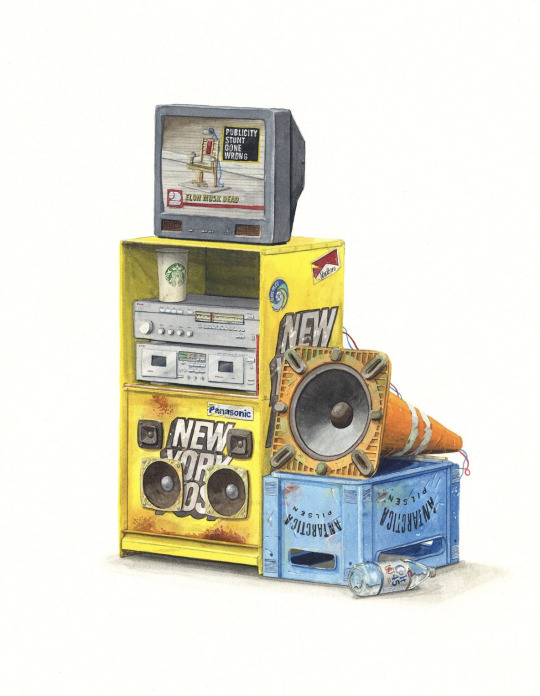


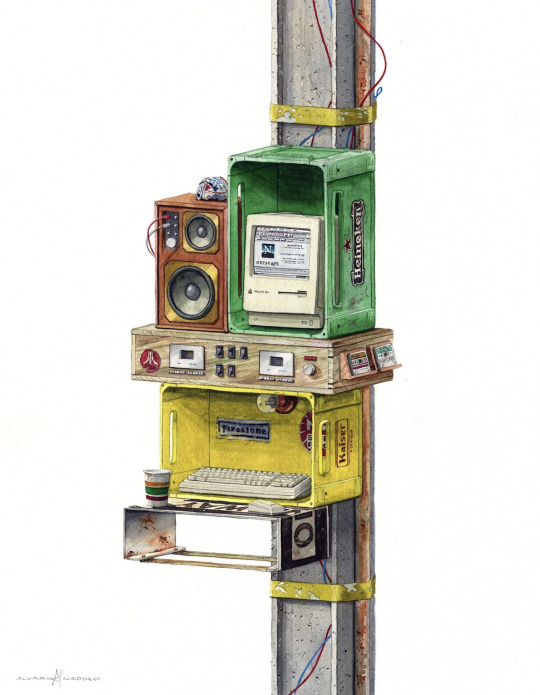
Alvaro Naddeo's "(igno)RANT."
Opening on Saturday, November 5th, 2022 at Beinart Gallery in Melbourne, Australia is artist Alvaro Naddeo's solo exhibition, "(igno)RANT."
Trash and objects found in the street are valuable, and not only for aesthetic reasons. The brands, logos and packaging depicted in Naddeo's work are objects with an inherent duality, both desirable and despicable, a clear by-product of Naddeo’s previous, lengthy career in advertising.

THE SUPERSONIC ART SHOP | FOLLOW ON INSTAGRAM
116 notes
·
View notes
Text
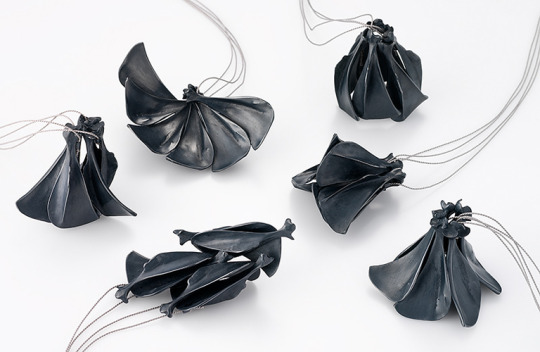


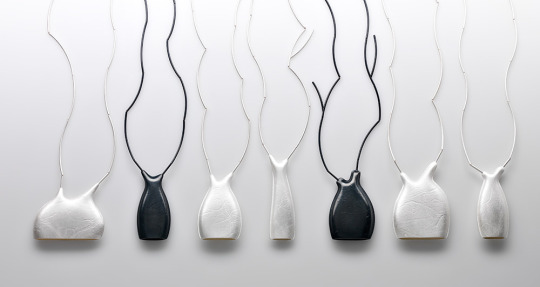

Leslie Matthews, Australian jeweller.
"I have been a practising contemporary jeweller and object maker for 22 years. Throughout my career I have participated in local, national and international exhibitions, having solo and group shows. I have a Bachelor of Design (Jewellery and Metalsmithing) and a Master of Visual Arts (Research), both degrees gained through the University of South Australia.
Since 2007 I have been Studio Head of Jewellery and Metal in the South Australian School of Art, at the University of South Australia, and I am also a partner of Gray Street Workshop (since 1986), a Jewellery and Objects Collective which was established in 1985."
9 notes
·
View notes
Text
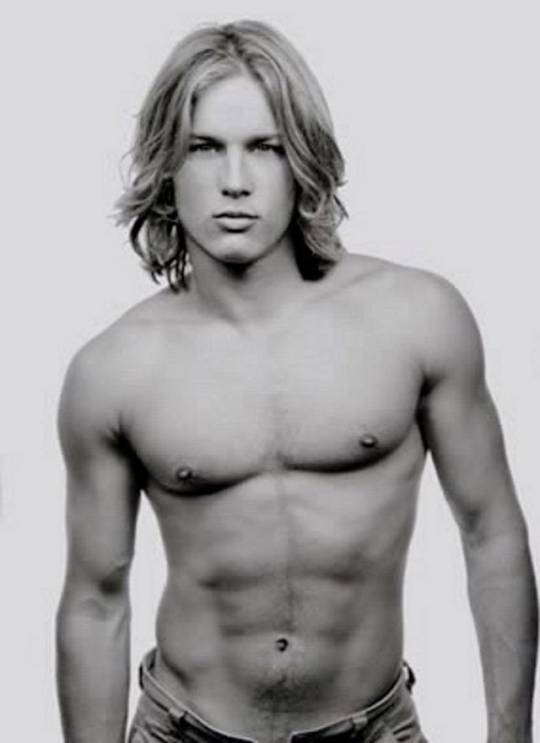
Meet Travis the Aussie who's big Down Under
BRIEFS ENCOUNTER THAT CHANGED 'CROC DUNDEE' KID'S LIFE
As he scanned the Los Angeles horizon with just $60 in his pocket and beaten-up old shoes on his feet, newly-arrived Travis Fimmel had little idea of what fate held in store for him.
Just a year or so earlier, this latter-day Crocodile Dundee was running barefoot around his family's dairy farm in Australia and tearing about the bush on a motorbike.
Now Travis, 21, was on the verge of fame and fortune - but old habits die hard. As he walked into the offices of LA Models, he realised that he had instinctively slung his tatty trainers over his shoulder.
He needn't have worried. Model booker Paul Nelson cast a professional eye over the muscular torso topped with an angelic, boyish face - and signed him on the spot.
"He had a beautiful face, a very funny personality - it all clicked," says Nelson. "We helped him out with money and a place to stay. We believed in him from the beginning."
That was last April. The young man who used to milk cows to earn pocket money was months away from one of the biggest deals with Calvin Klein since Kate Moss made her name at the fashion house.
THE extremely well-endowed Aussie, now 22, is on a six-figure deal to front the underwear campaign that has sent ripples of desire and envy throughout the population.
Gazing down from a giant billboard in downtown New York, Travis is an Adonis clad in skimpy white briefs. His image is plastered on billboards and in magazines worldwide. A week ago, he was in London's Selfridges autographing underwear for fans.
But when he opens his mouth to speak, the words that come tumbling out are not in sync with his sex-symbol status. In his Aussie drawl, he says frankly of the huge poster: "I don't look at it, man." He is also quick to laugh off the idea of being an object of desire for many women - and some men, too.
"Can't take it seriously, mate. Embarrassing. Funny." Then with a cheeky smile, he relents saying: "It's good, it makes a lot of people happy."
There is no holding back the Aussie bluntness. He says of new boss Klein: "You'd think he'd be stuck-up but he's just so down-to-earth. He's rich as f***, though."
After appearing in a Jennifer Lopez video, he described the diva thus: "She's got a fat a*** but she's very nice." As for his instant success and the underwear shoots: "I felt like a p***k. I was very self-conscious I have to say, mate." Still, at least he did them. He once declared: "No way, mate, I'm not wearing jocks."
These days Travis has more "jocks" than he can use. Along with the year-long contract comes a supply of Calvin Klein pants: "I've got 500 pairs of them at home. I only have to wash about once every two months."
Travis grew up on his parents' remote farm 26 miles outside Echuca in Victoria. The youngest of three brothers, he worked on the farm and rode around on motorcycles and hunted foxes.
Proud mother Jenny says: "He would disappear and camp out for the night. Even now, he jumps on a motorbike and heads out to see what's been happening on the farm." She offers some insight into why her son is dismissive about his good looks: "He was small, the little guy, so it doesn't suit his character to make a big deal about his looks."
At 17, Travis moved to Melbourne to play football and study sport management at university. But hopes of a sporting career were dashed when he broke his leg.
It was while working out in a Melbourne gym that he was spotted by a talent scout from Peter Chadwick Model Agency.
Booker Matthew Anderson recalls: "He never saw himself as a star and I don't think he does now. He is either genuinely not aware of his appearance, or he's just playing it cool. It might be a mixture of both." Part-time modelling jobs took Travis from Melbourne to London. At 19, he dated then All Saint Nicole Appleton. But after a short affair, Travis dipped out of the limelight, dumping Nicole because she was "boring".
It was only a matter of time before he decided to try his luck in America. "Just to see the country," he says. "I keep saying: 'I am not a model, mate. It's just a job to make money to travel'."
After being plucked from obscurity by LA Models, the young Aussie found himself in close proximity to a number of leading ladies.
But his talent for speaking his mind appears to be almost as big as his talent for filling Calvin Klein's new Body Underwear line. He even describes playing the love interest in a Janet Jackson video as "cheesy". Today he lives in LA and is more likely to be found surfing the waves than trapped inside a gym: "I'm the most unhealthy person in the world."
Travis has also been spotted out with Hollywood beauty Meg Ryan, 40. The pair recently dined at Manhattan's Nobu sushi restaurant owned by Robert De Niro. They shared plates of raw fish and giggled like schoolkids.
But we'll have to wait to see whether a more mature woman can tame this wandering Aussie spirit. "Modelling is so boring," he confides. "It's meant to be glamorous but you sit there for ages.
"I don't have a clue what I'm doing. I might go home straight after this. I might go travelling again. My plan is to make a plan."Interview by Emma Hibbs
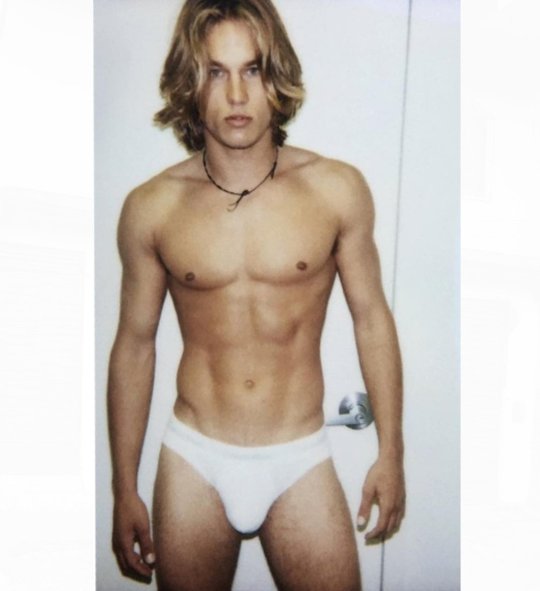
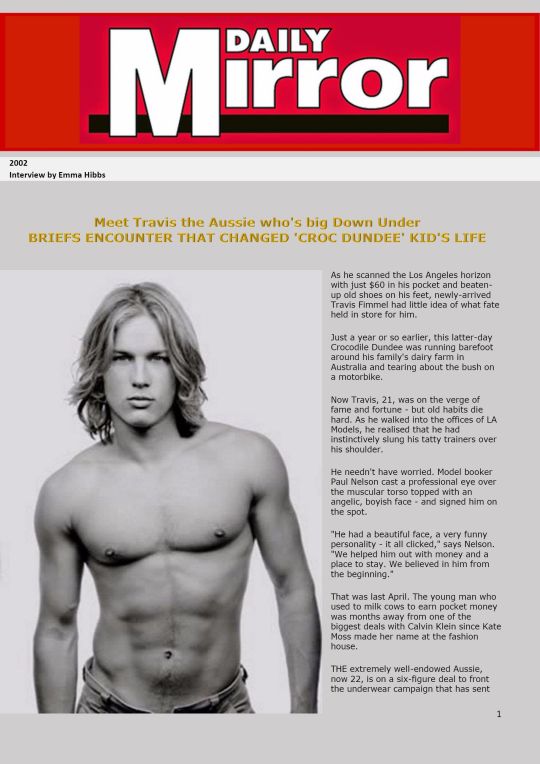
10 notes
·
View notes